As readers know. I have an affinity with the Far East and have travelled extensively, both on and off the tourist trail. Among the countries I’ve visited, Cambodia holds a special place. Some years ago my wife and I went to northern Cambodia, more especially in the Angkor area.
It has become a favourite area for both of us. Indeed, together with some of my pupils, for a few years, I used to support a hotel school in Siem Reap called Sala Bai. It is part of a larger NGO project in Cambodia.
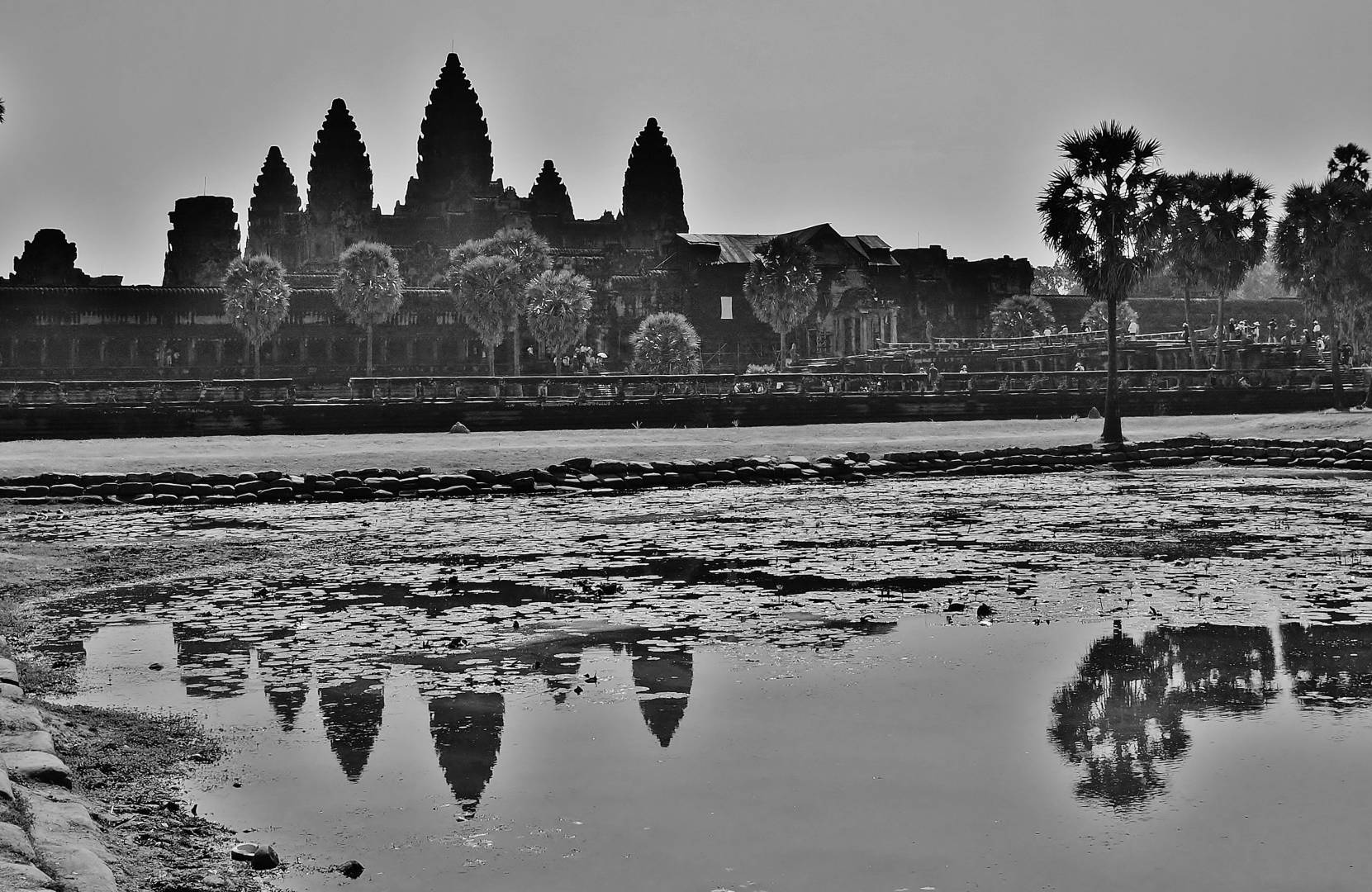
Apart from France, where the NGO was created, this particular school also receives support in Australia and Singapore. Unfortunately, as I’m getting older and closer to retirement (June 2021), I haven’t found yet any other teacher in the school to take over the project and the fund-raising activities.
I really enjoyed working on the project because the pupils became heavily involved and discovered a country they could hardly place on a map. They had no idea about the history of the country. They were also surprised to learn about the living standards down there. In any case, if you plan a trip to Cambodia, a stay at the school’s hotel or have lunch at the school’s restaurant is a must.
Adventures
As a young boy I was always fascinated when I read books like Heinrich Harrer’s Seven Years in Tibet, Pierre Loti’s A Pilgrimage to Angkor or Alexandra David-Neel’s My journey to Lhasa and other adventure books by Robert Louis Stevenson and Mark Twain to name just a few. So going to some of those places mentioned in various books was a sort of dream come true, a kind of fulfilment of my vicarious adventures as a boy. Coming of age, I became interested not only in monuments but also in the people who live there.
Of course, the Ricoh GR was my trusted camera that accompanied me on the trip. Although I know some of you may wonder why I did not use colour imaging for the article, there’s a more je ne sais quoi in the black and white images. The portraits were turned into in monochrome, with a little post-processing to enhance contrast.
The temple images were shot directly in black and white high contrast. If the Ricoh is not as good as the Leica in terms of colour, crispness and contrast, the output in black and white is to my eyes excellent. In terms of analogue photography, it’s very close to what you could do with an Ilford paper grade 4 (which was the paper I used many years ago) and the high contrast can be at times more contrasty than a Kodak Tri-X.
The Angkor temples
The Khmer civilisation flourished from the 9th to the 14th centuries CE. During the reigns of the Khmer kings, their empire spread as far as Laos and parts of Thailand. The temples were initially dedicated to the Hindu god Shiva and became Buddhist temples only later. Angkor in the 10th century spread over 360 square miles with an elaborate water network and supported a population of 750 000, which made it the biggest city of those ancient times.
The temples spread over this territory and you can start wherever you want. To visit the site all you need do is to buy a pass which gives you unlimited access to the different temples. You are regularly checked by the apsaras (some more on that later) which is the name given to the site attendants.
The temples are more or less all built according to the same pattern. The square temples are surrounded by a moat that you can cross thanks to bridges and then a surrounding wall. These bridges or walls are protected by nâgas (serpent heads), lions or garudas (half man, half eagle). The representation of garudas in Tibetan Buddhism is quite different from the original
The first building leads to another one built on the same pattern until you reach the heart of the temple. The temples were rediscovered by the French explorer and naturalist Henri Mouhot in the middle of the 19th century. He was responsible for the popularisation of the temples in western Europe. He died of malarial fever near Luang Prabang in Laos in 1861 and is buried there.
Angkor Wat
This is probably the most famous temple. It appears on the Cambodian flag and on your visa. It was built in the first half of the 12th century by King Suryavarnam II and was originally dedicated to Vishnu. Once you reach the top at the centre of the site, you discover the jungle surrounding it. The temple also hosts smaller temples within its walls.
Beantay Srei
The temple was built by the Khmer king Jayavarnam V in the second half of the 10th century and was dedicated to Shiva. It is now restored but has suffered from looting over the years. The most famous robber (who stole devatas — carved statues — from the temple in the early 20th century) is our former French Minister of Culture and writer André Malraux. He was imprisoned and then released on bail.
The temple is built according to the traditional Khmer pattern and contains in its heart magnificent carvings which are often regarded as some of the finest examples of Khmer art.
Ta Prohm
This is probably one of the best-known temples because some scenes in the movie Tomb Raider were shot there. The place is overcrowded during daytime and a visit just before closing time is highly recommended.
That’s what we did and avoided the crowd. The place was almost empty. It’s a magical place and wandering among the ruins where stones intermingle with the huge roots of banyan trees is a romantic experience. Apparently some of the buildings still stand thanks to these huge roots.
Angkor Thom
This was our favourite temple with its head-shape towers. It was built between the late 12th and early 13th centuries. It was constructed as a royal city by King Jayavarnam VII. The carvings on the surrounding walls are sheer beauty and, while exploring every nook and cranny of the temple, you may just feel like Indiana Jones on the verge of discovering some unknown ancient civilisation.
Khmer sculptures
All the temples house wonderful sculptures that either depicts scenes of battles or of daily life. The temples also house the sculpture of apsaras. In mythology, they are water nymphs renowned for their beauty. They are also known for being excellent dancers. According to legend, they emerge from the water to seduce men. Men unwilling to be seduced go mad while men who accept them as a mistress or marry them are granted immortality.
However, Angkor is not only a stone temple but a city teeming with life. Apart from locals riding their motorbikes and monks on a visit to the famous sites, the surroundings of the monuments are home to small Buddhist temples.
You may also encounter the modern version of apsaras, the site attendants with their children who play around the temples not far their mothers’ watch. It’s a really nice feeling to hear the laughter and cries of children among these ancient stones.
Local markets
Visiting a country without a spell in the local markets and villages would be a mistake. There’s a nice atmosphere to these villages, usually crossed by an earthen road. The Cambodian people are really friendly.
Of course, sometimes you will probably be stopped by begging victims of Khmer landmines or children trying to sell you magnets, postcards or bamboo origami. “Hello, one dollar”, they will say with a broad smile on their faces. In those cases, you comply because you are so hypnotised by their smiles.
Tonle Sap
The Tonle Sap is a fresh-water lake that trebles its size with the monsoon. During the rainy season the water from the Mekong, instead of going downstream, reverses the flow of the Tonle River, flooding a large part of the lowlands south of the Angkor region.
We went there during the dry season and the sight of the houses built on stilts gives you an idea of how high the water level can be at the height of the monsoon season. Another reason was to bring copybooks and pens and pencils that we usually carry in our luggage to give to a local school that borders the lake.
Taking these small presents has long been a habit when we are travelling to developing countries but it was particularly appropriate on this occasion as I was quite deeply involved helping the NGO. Some children who live in the villages that border the lakes are often selected to study at the Sala Bai school.
The only people that seem to earn a decent living are the ones who breed crocodiles for the Chinese crocodile leather industry. Despite poverty, child labour and what we westerners regard as squalid living conditions, the people in the villages we visited really welcoming and we had a great time sharing moments with them even though our time was limited.

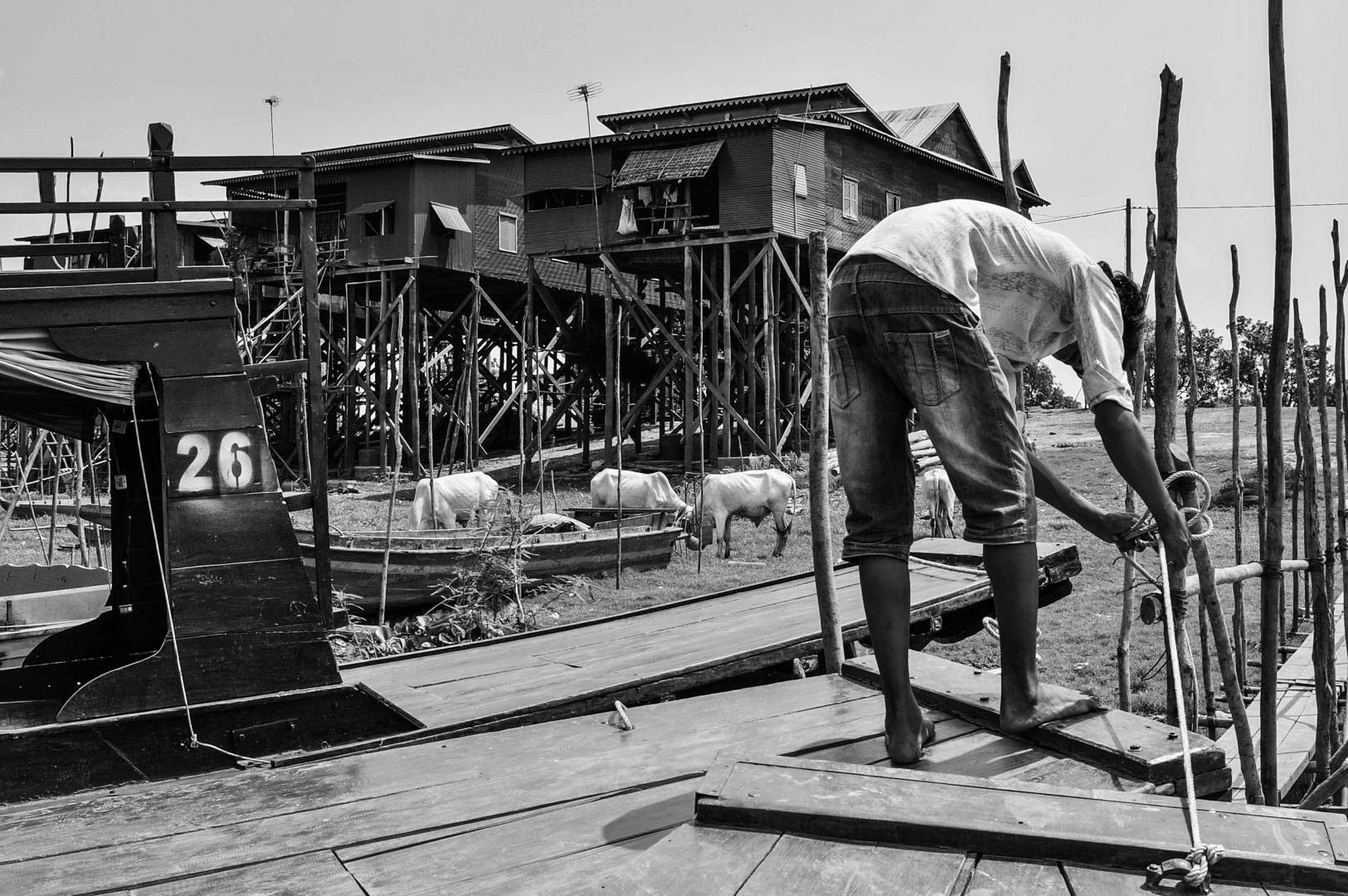


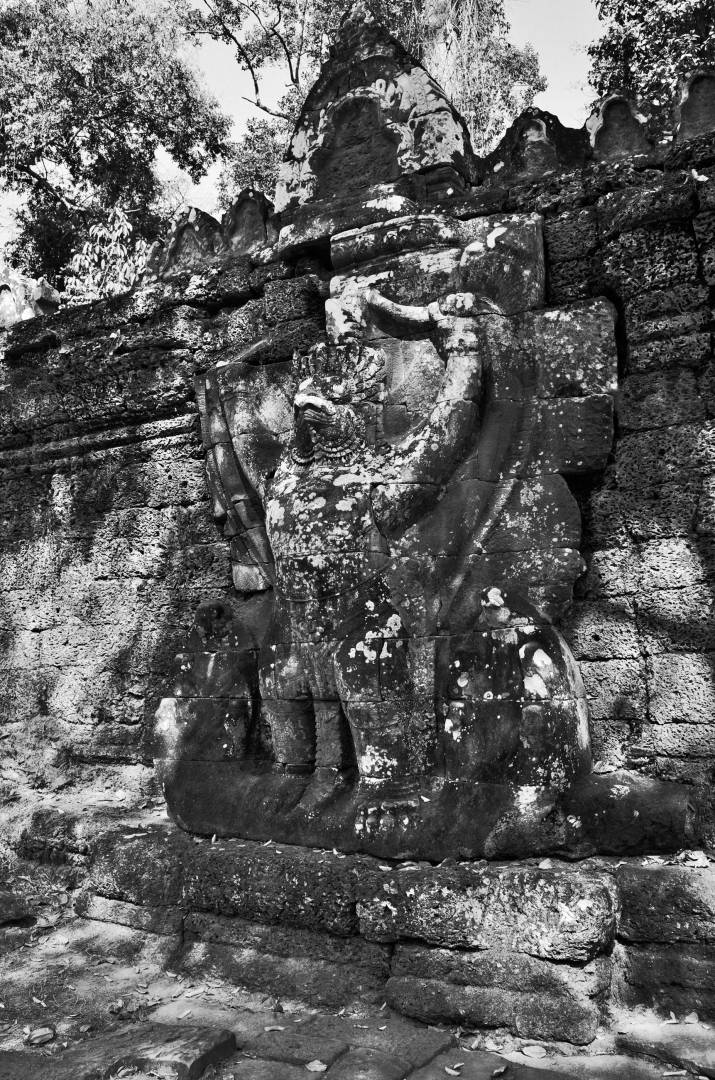
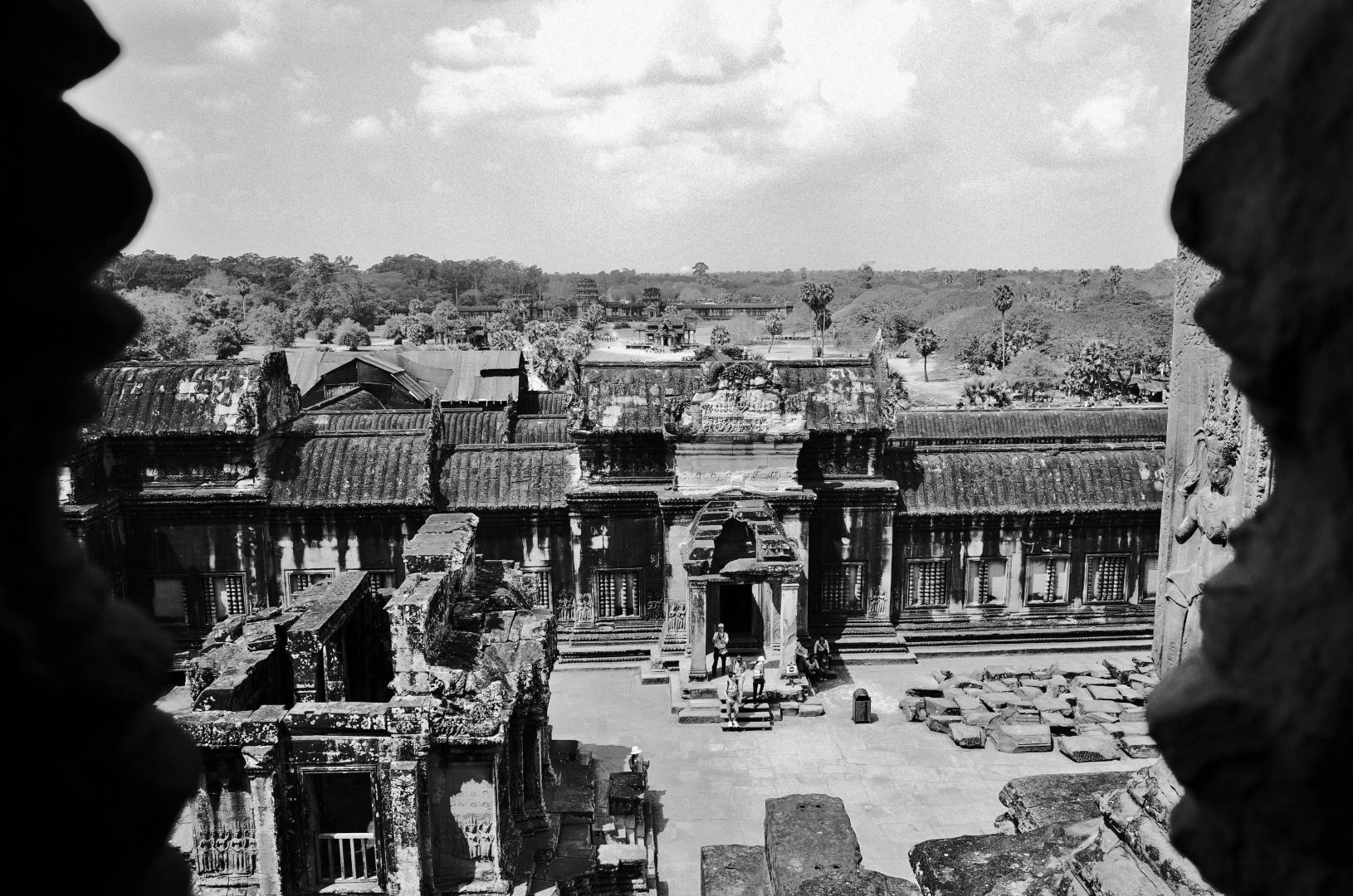
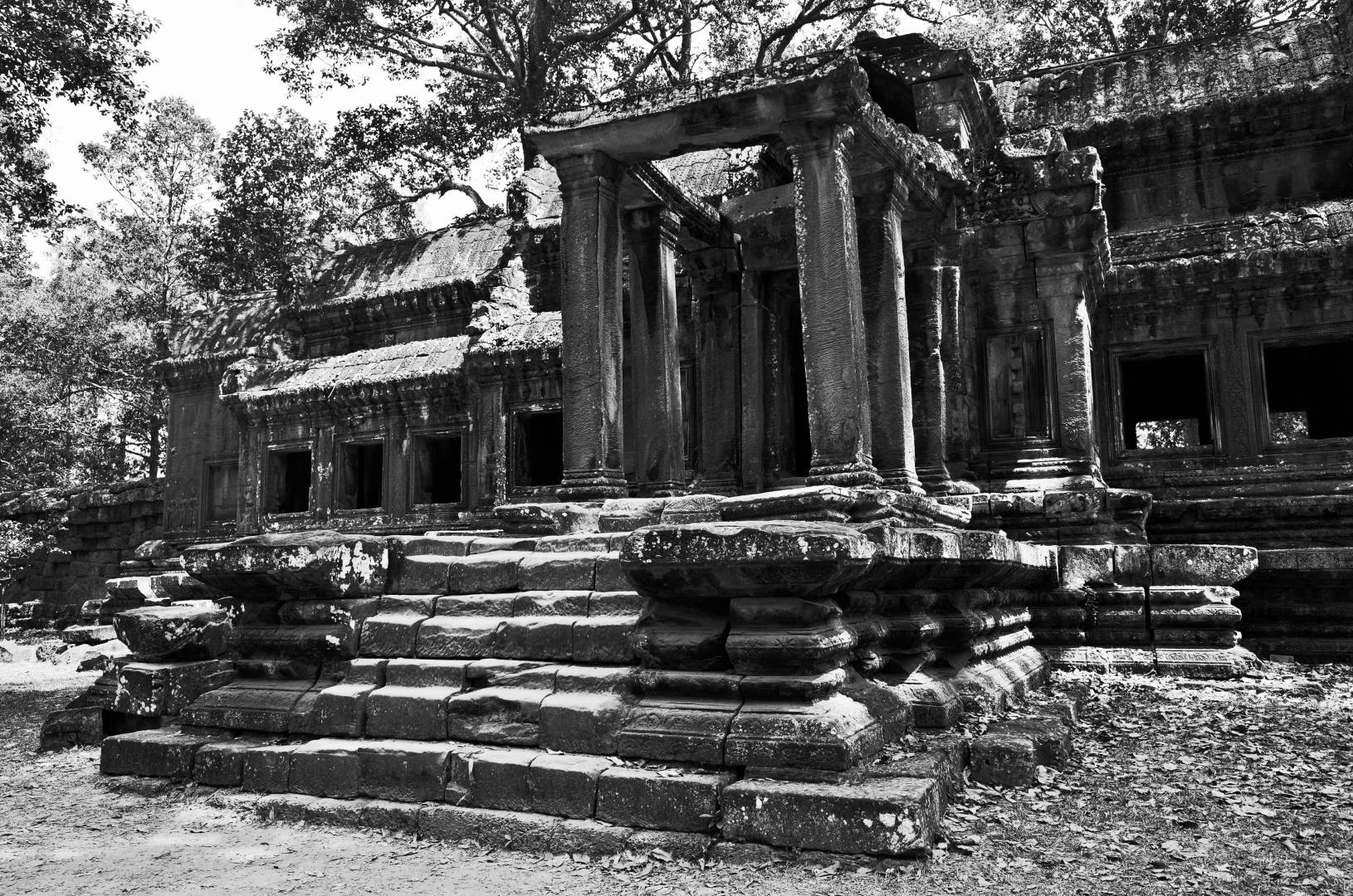
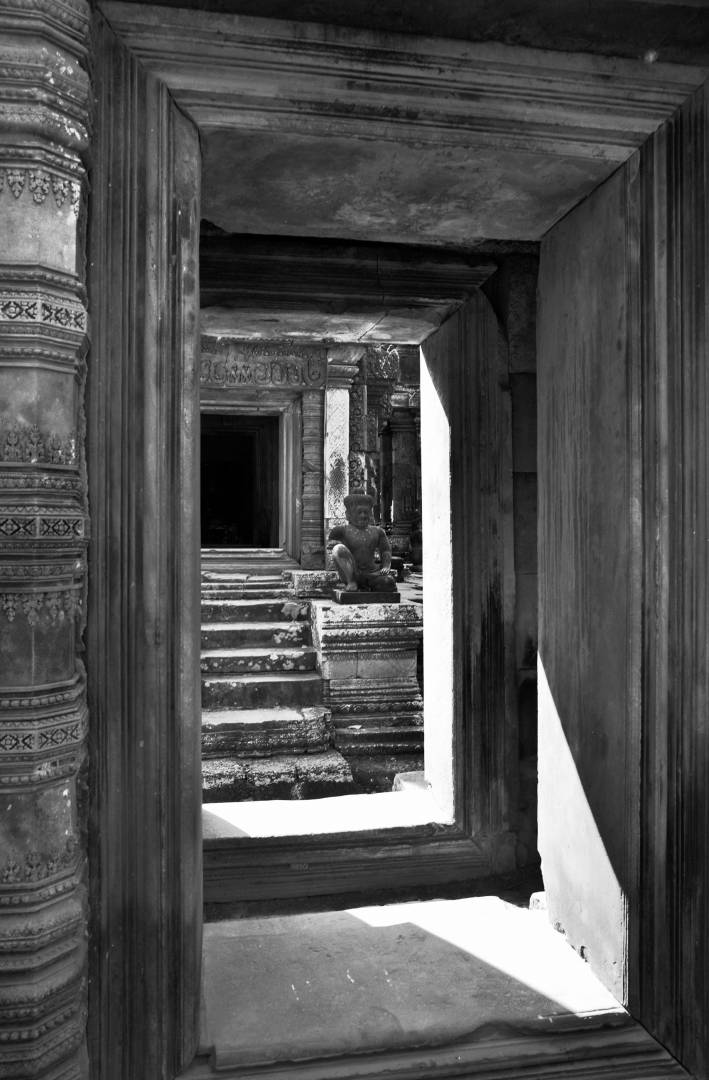
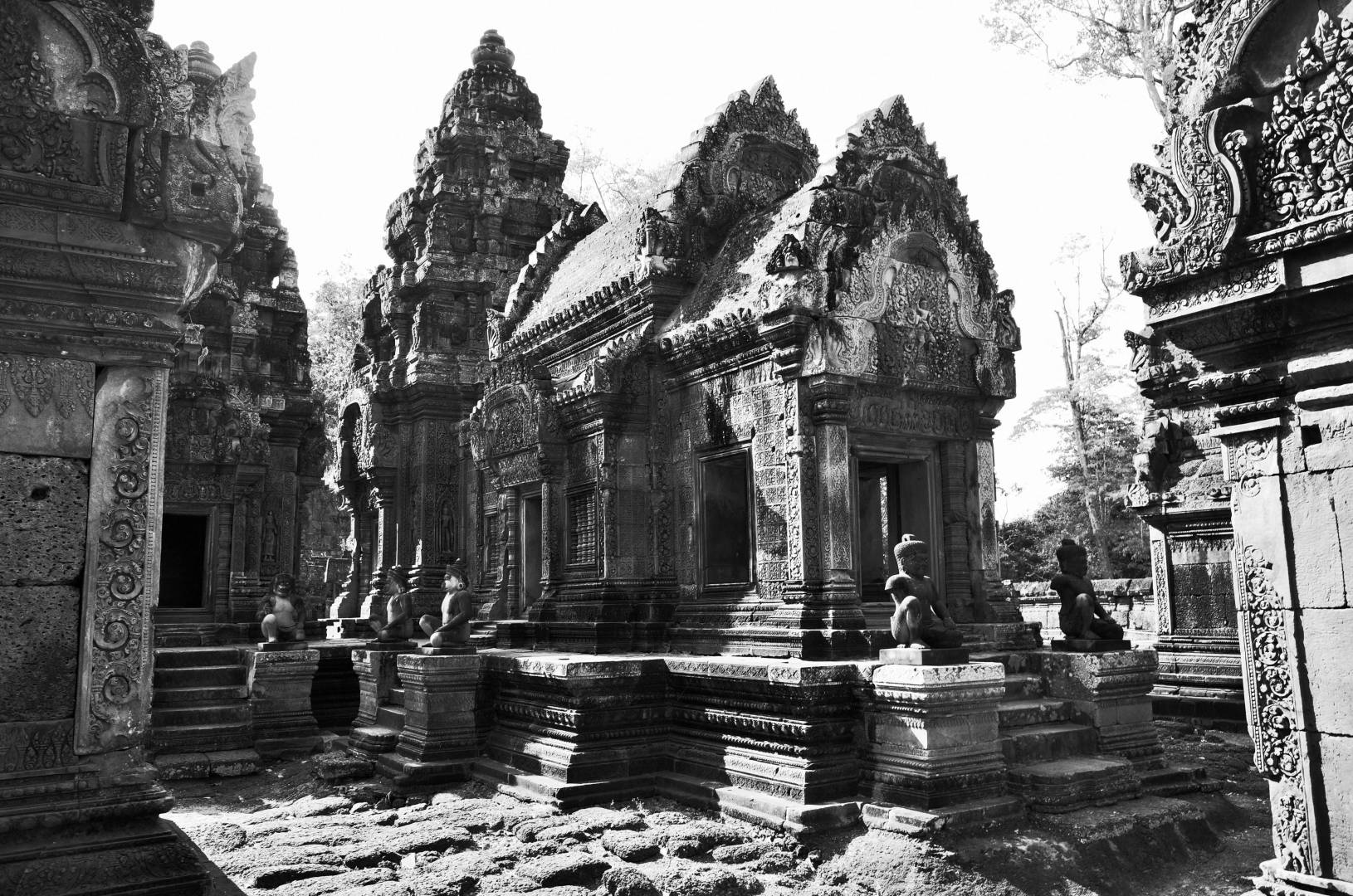
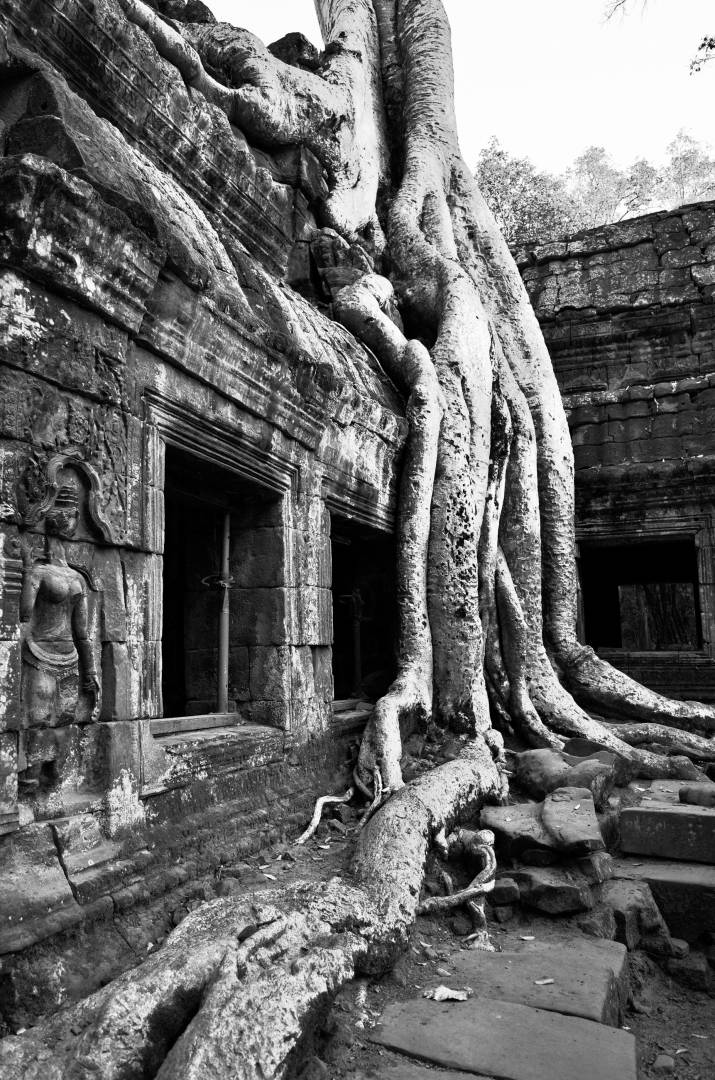
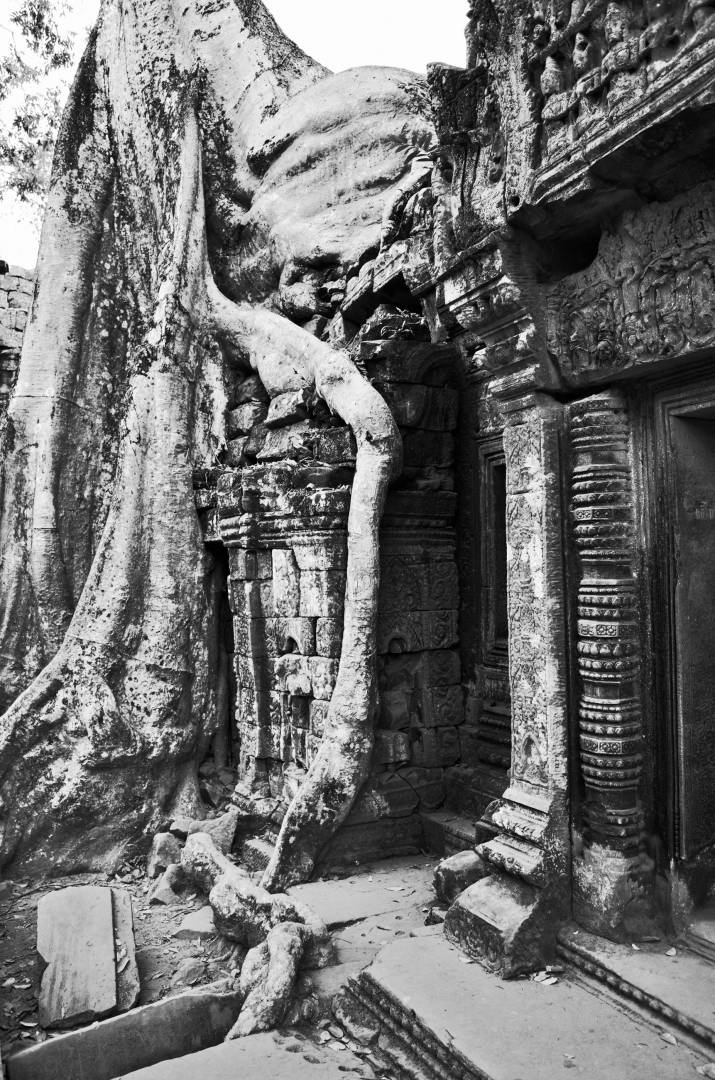
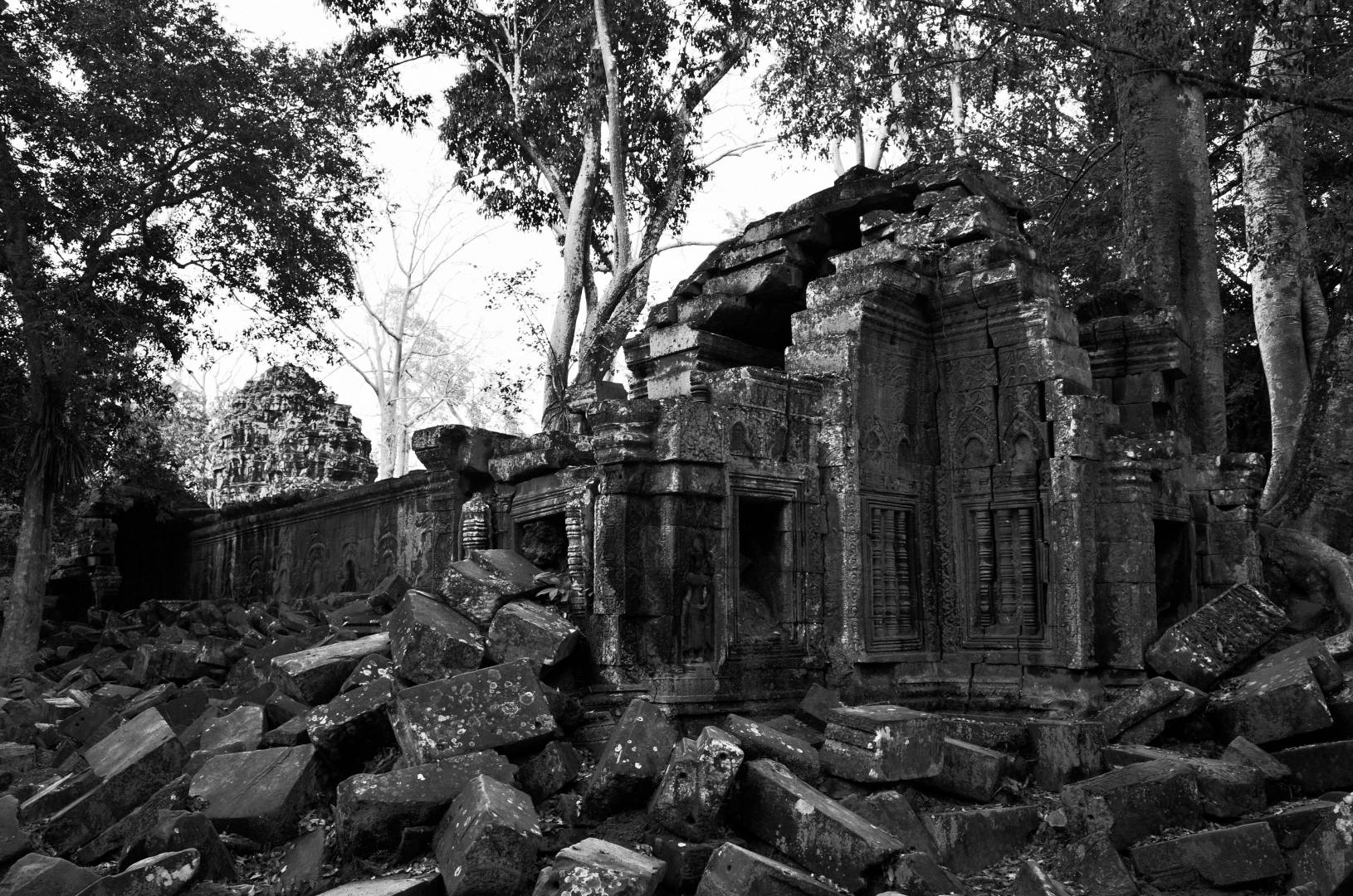
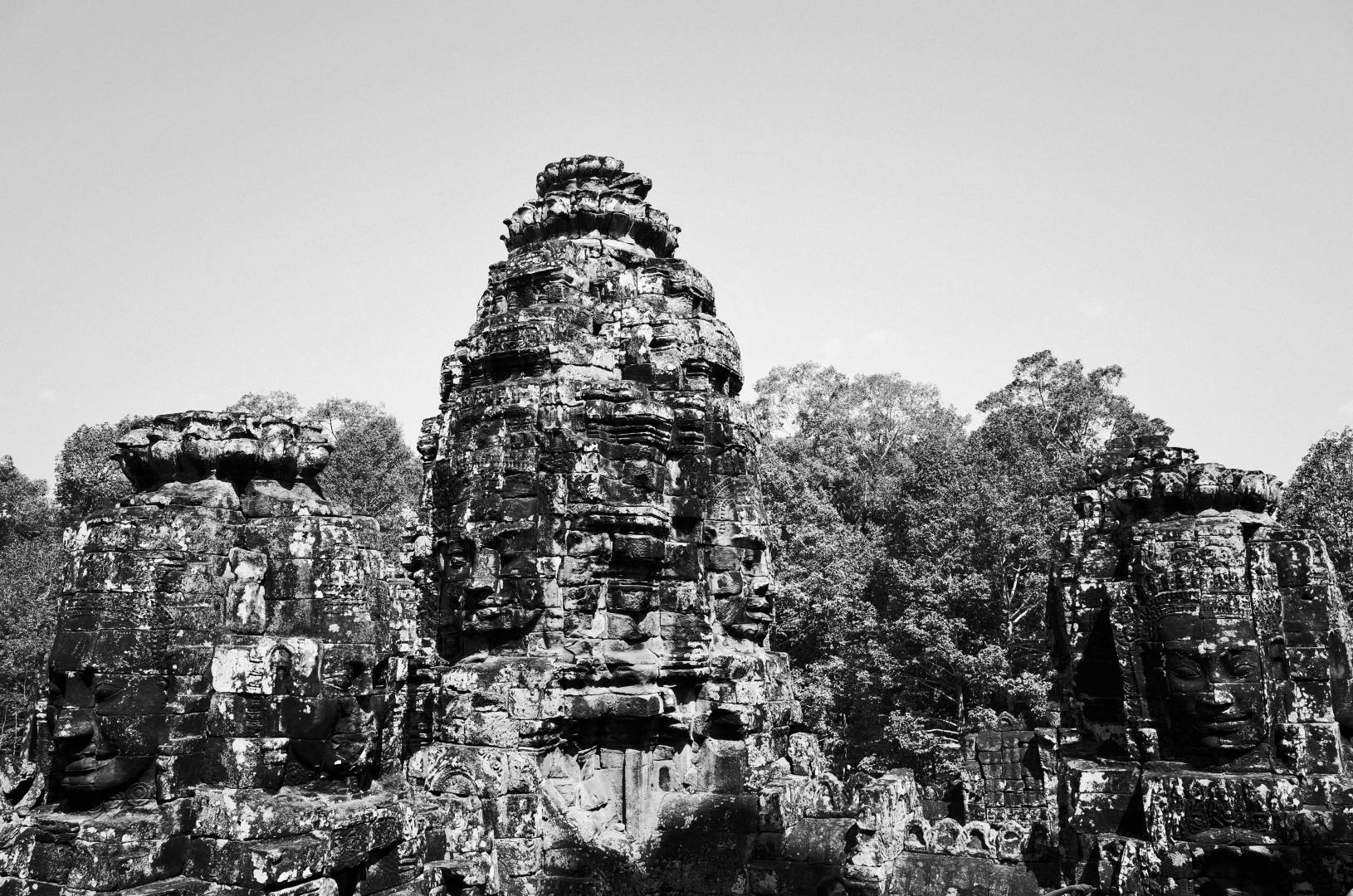


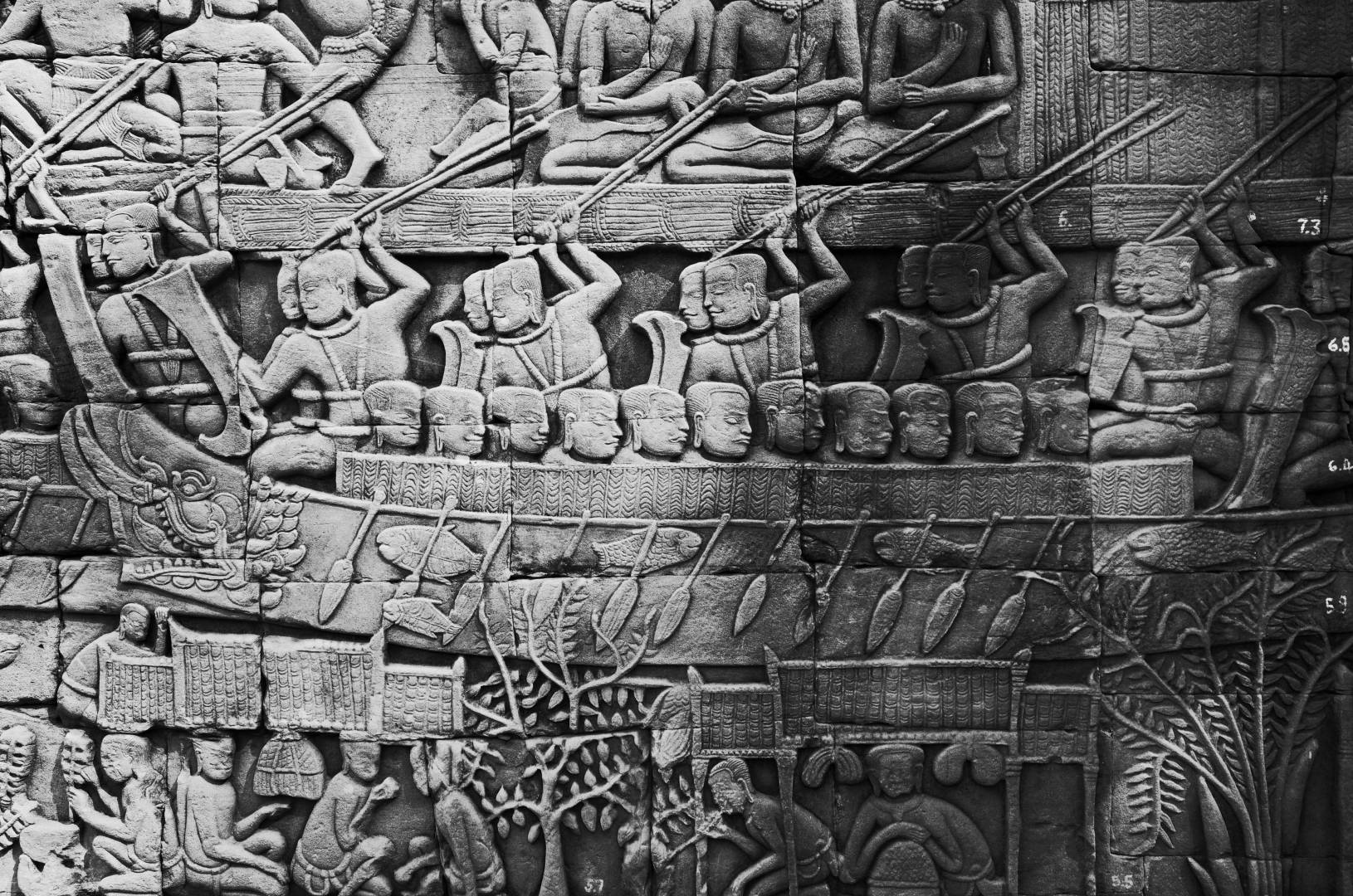
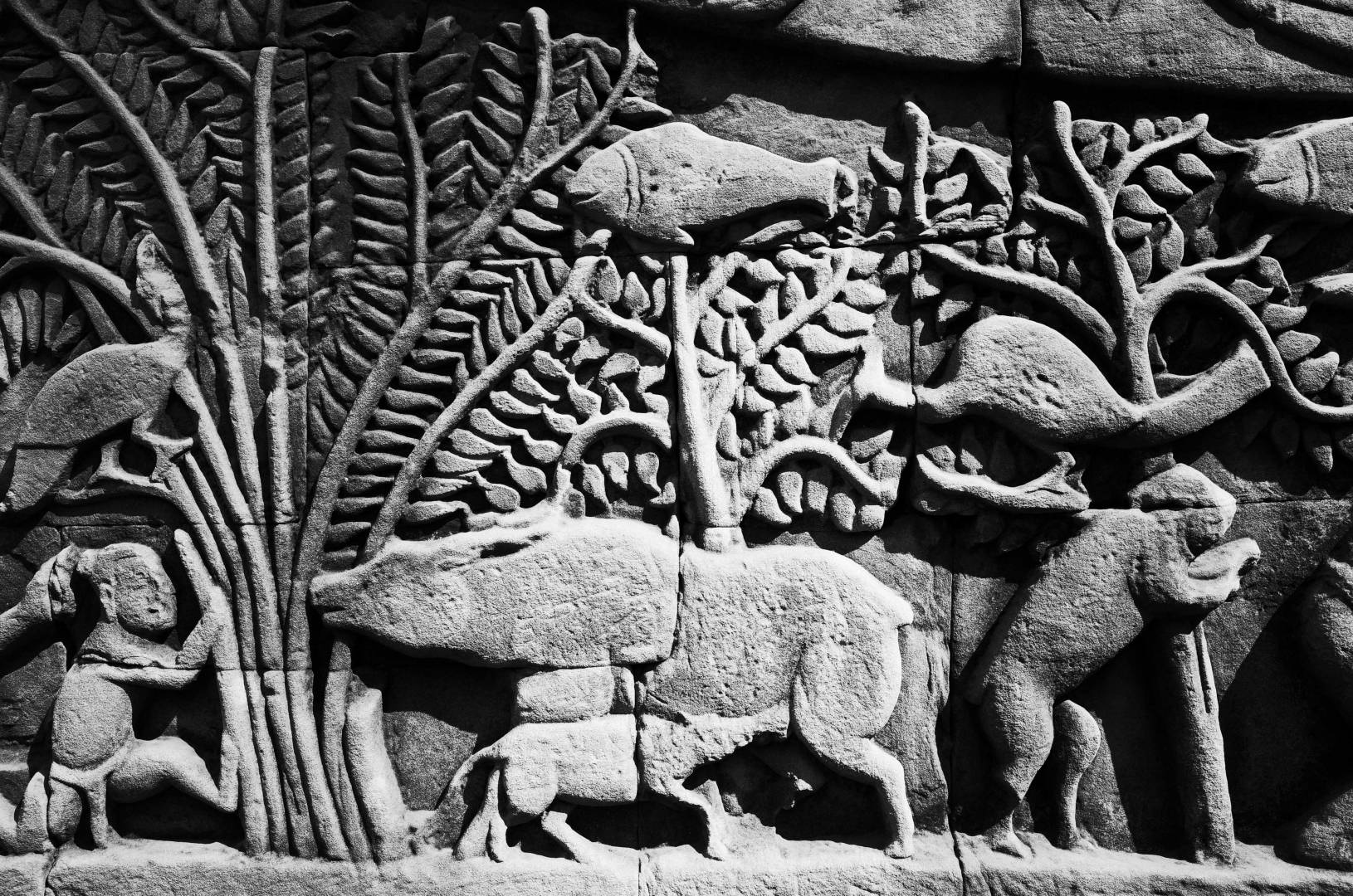
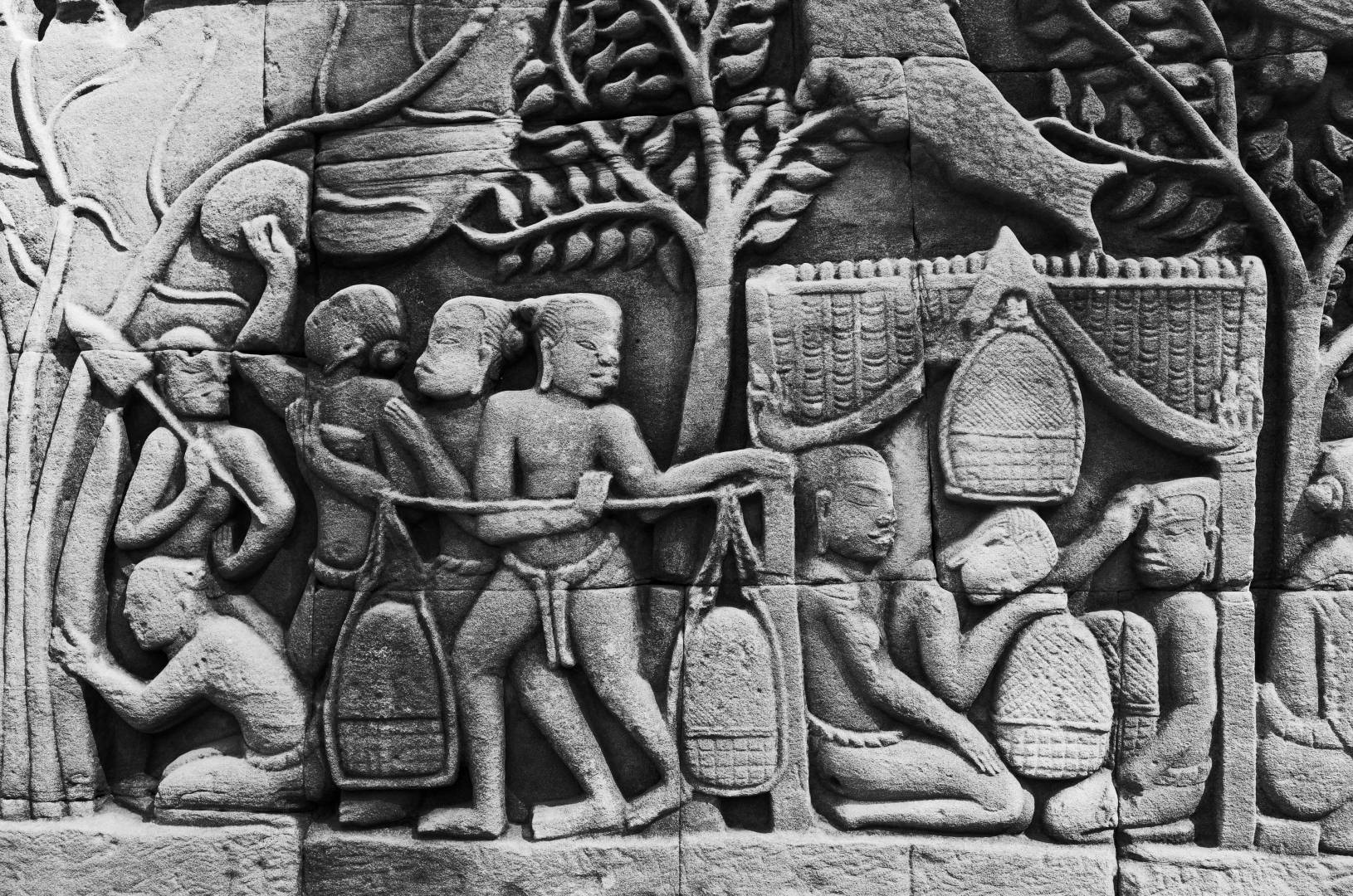


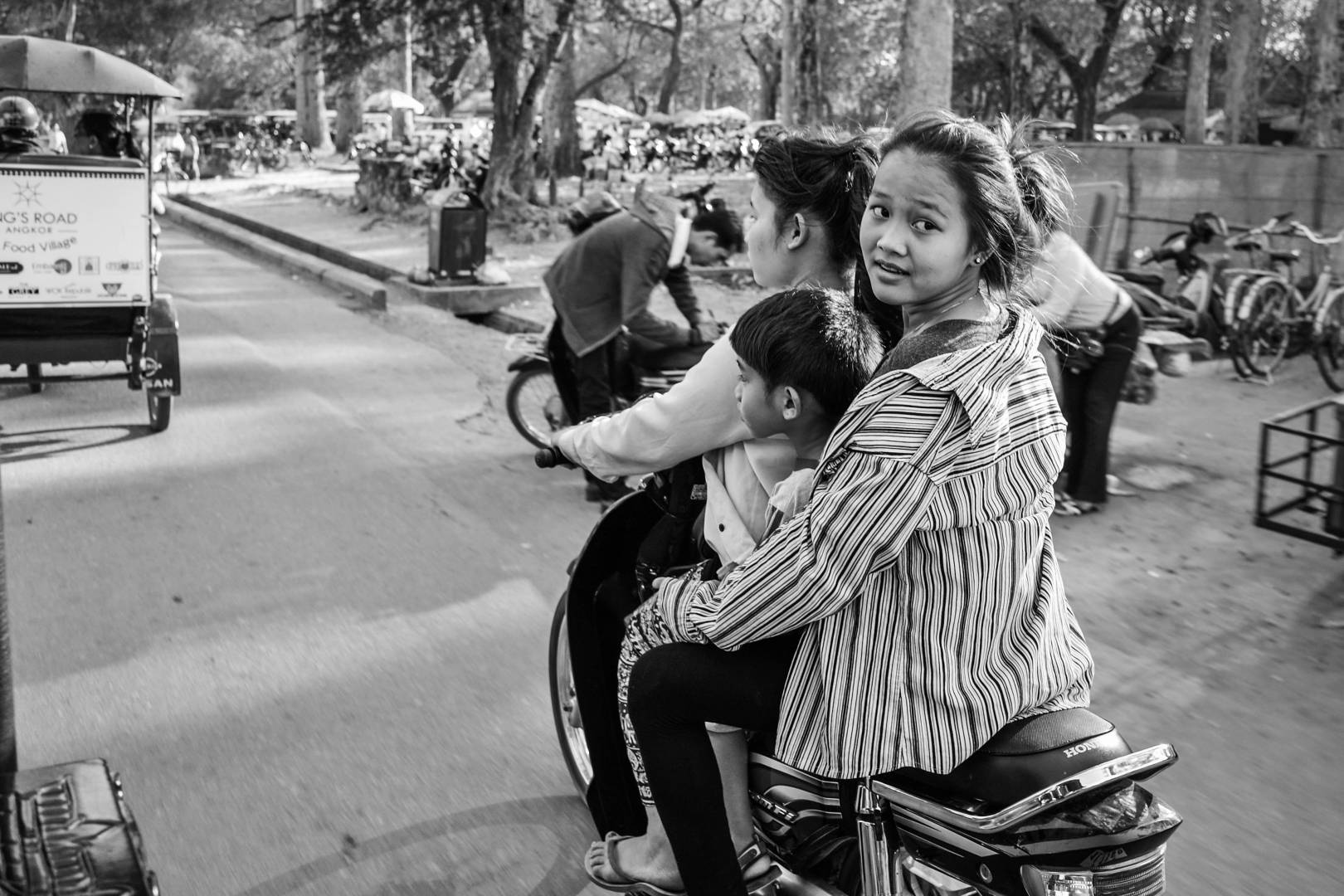
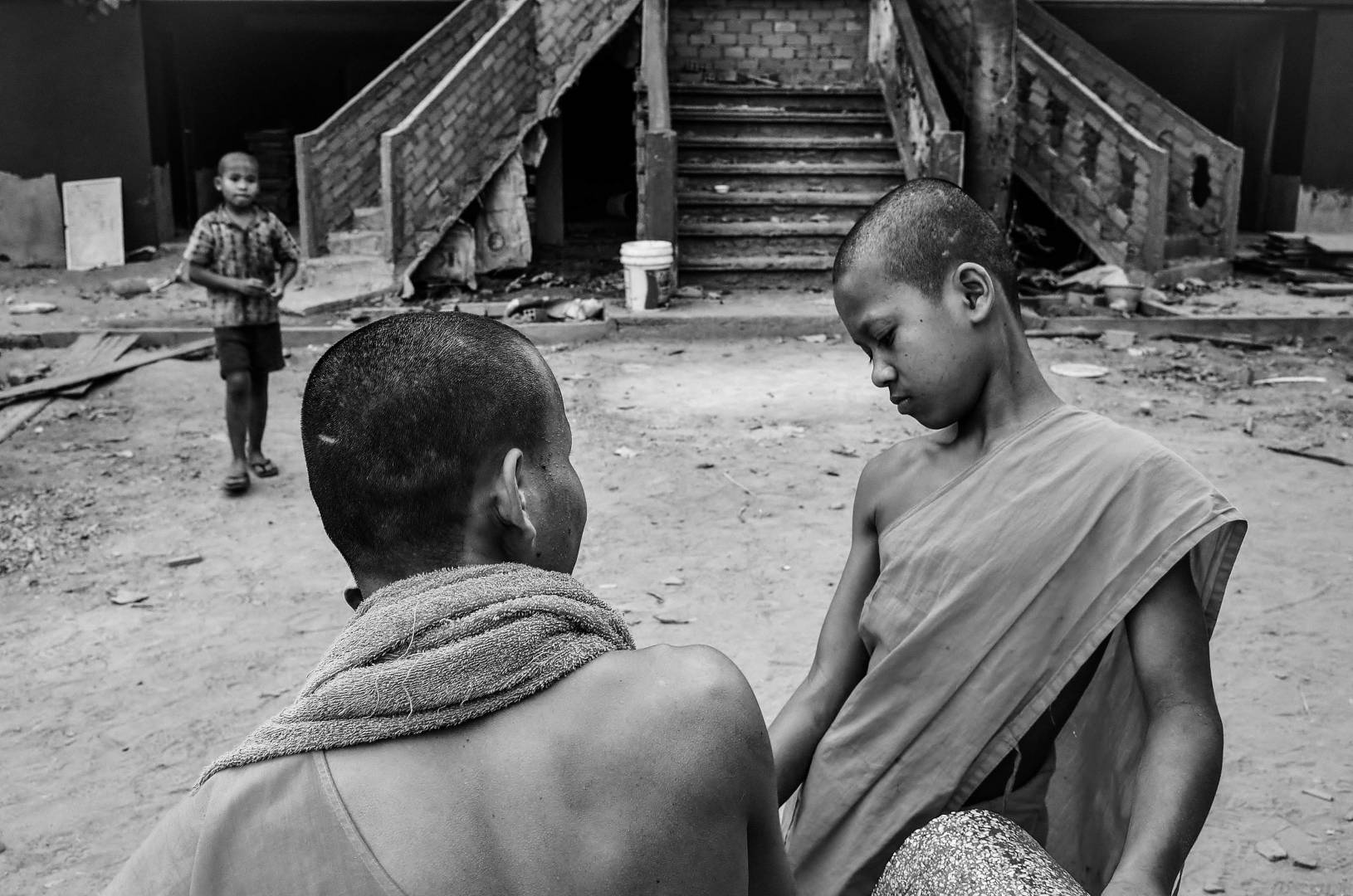

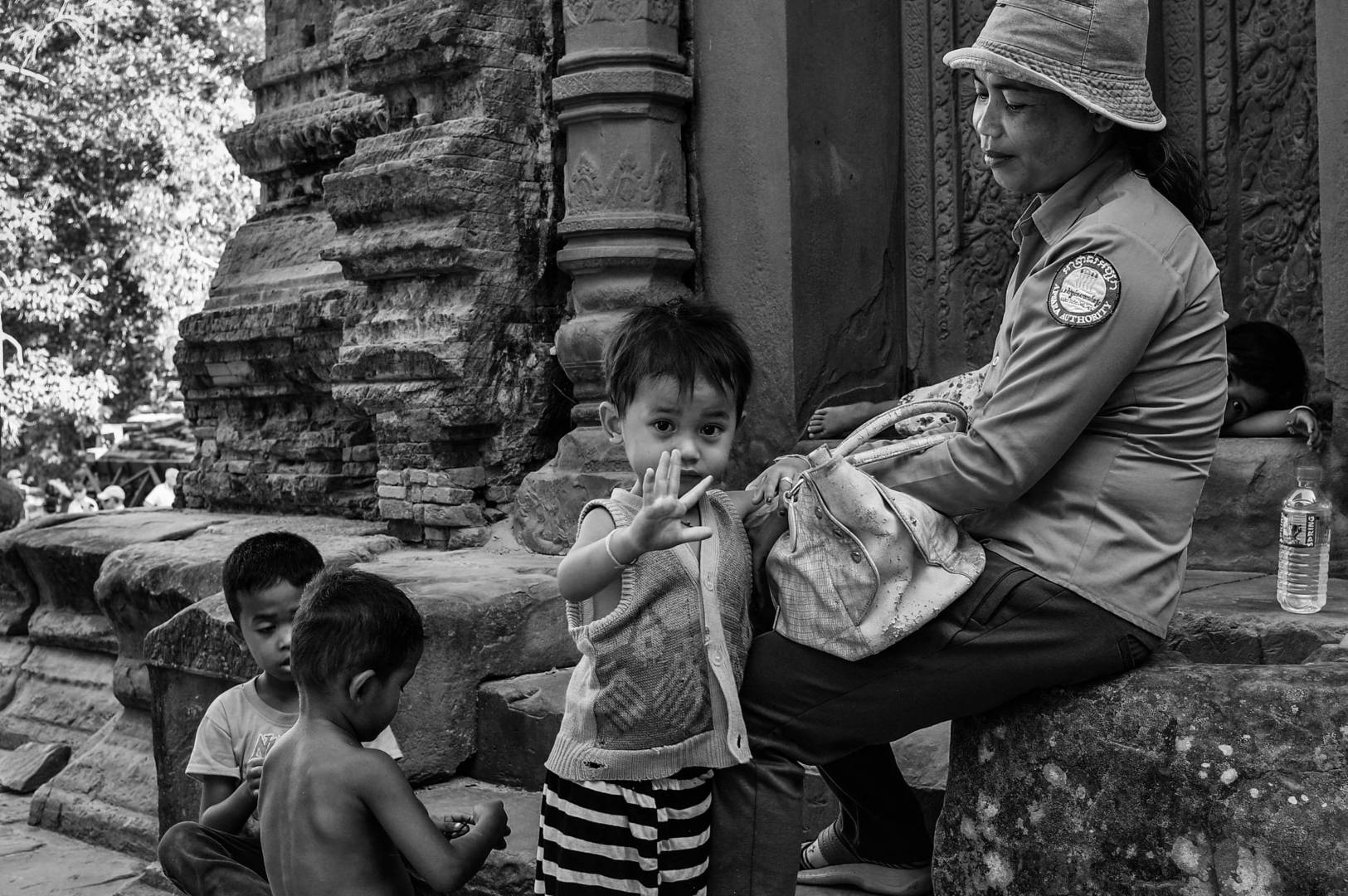
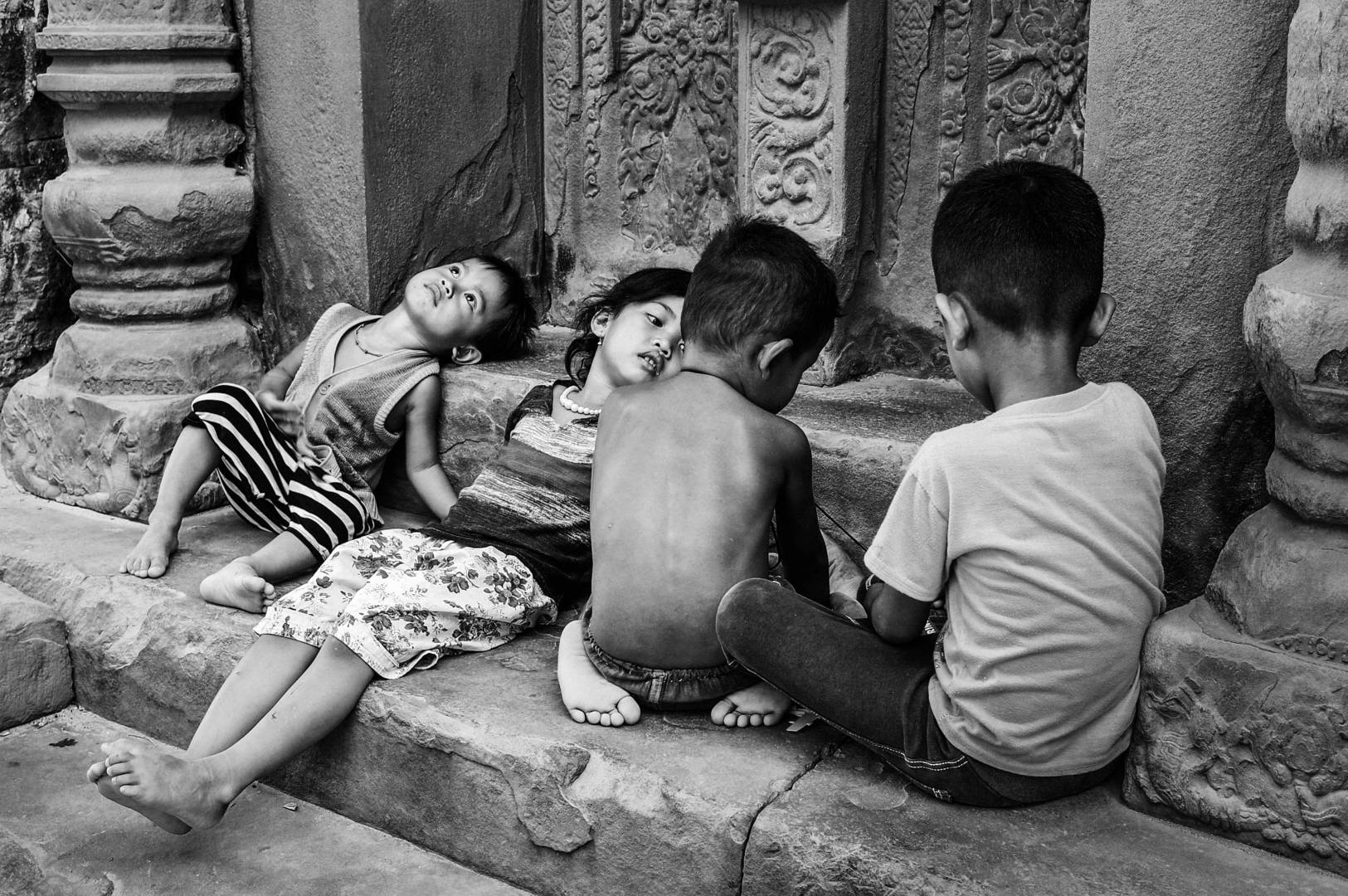
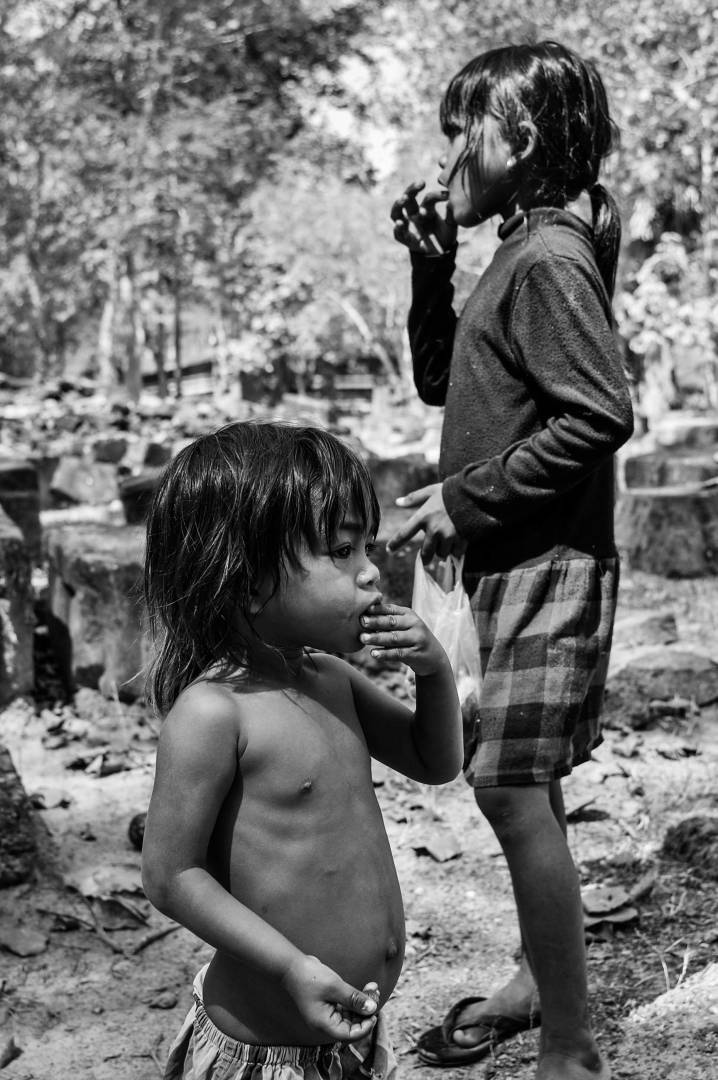

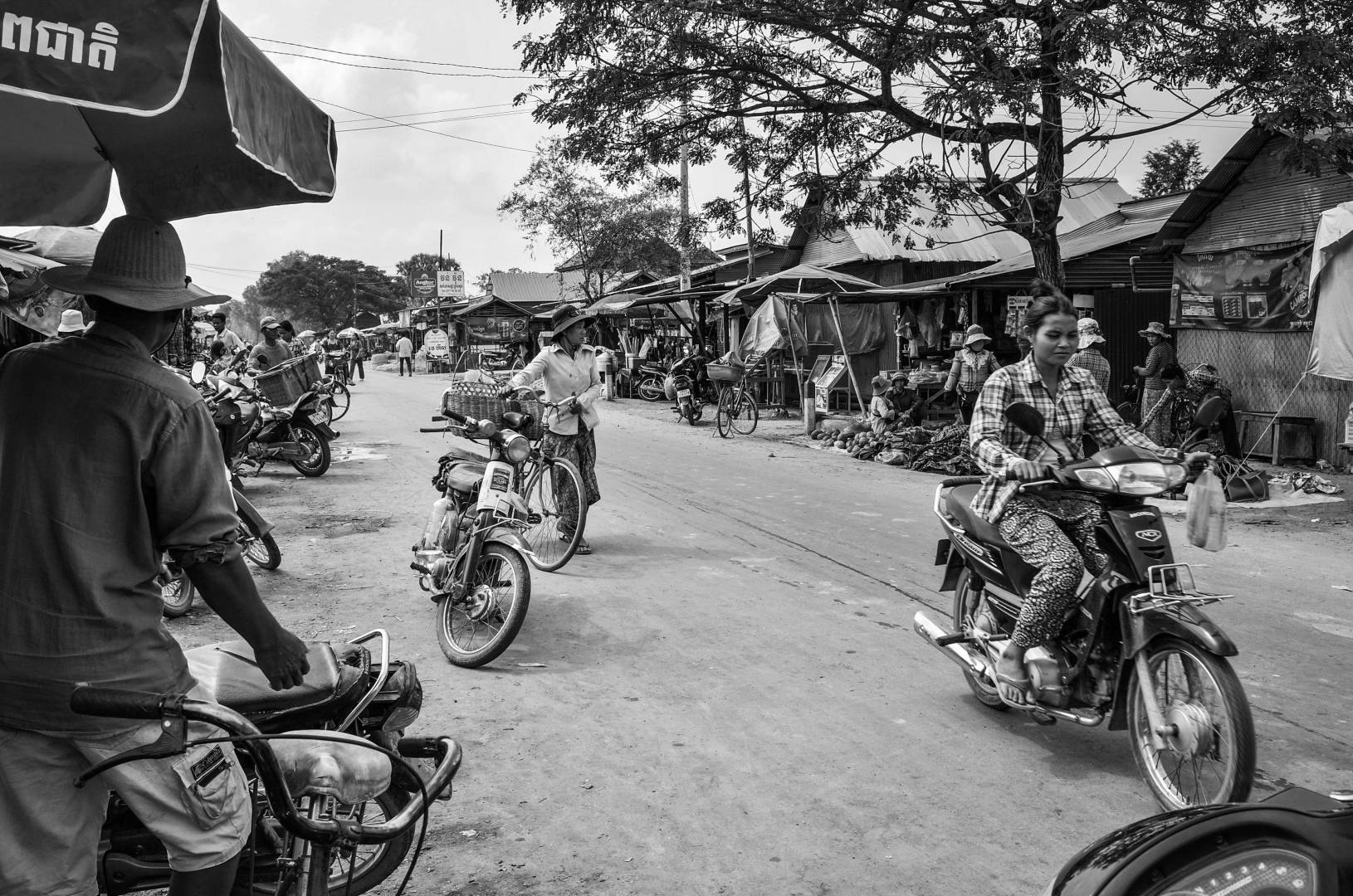
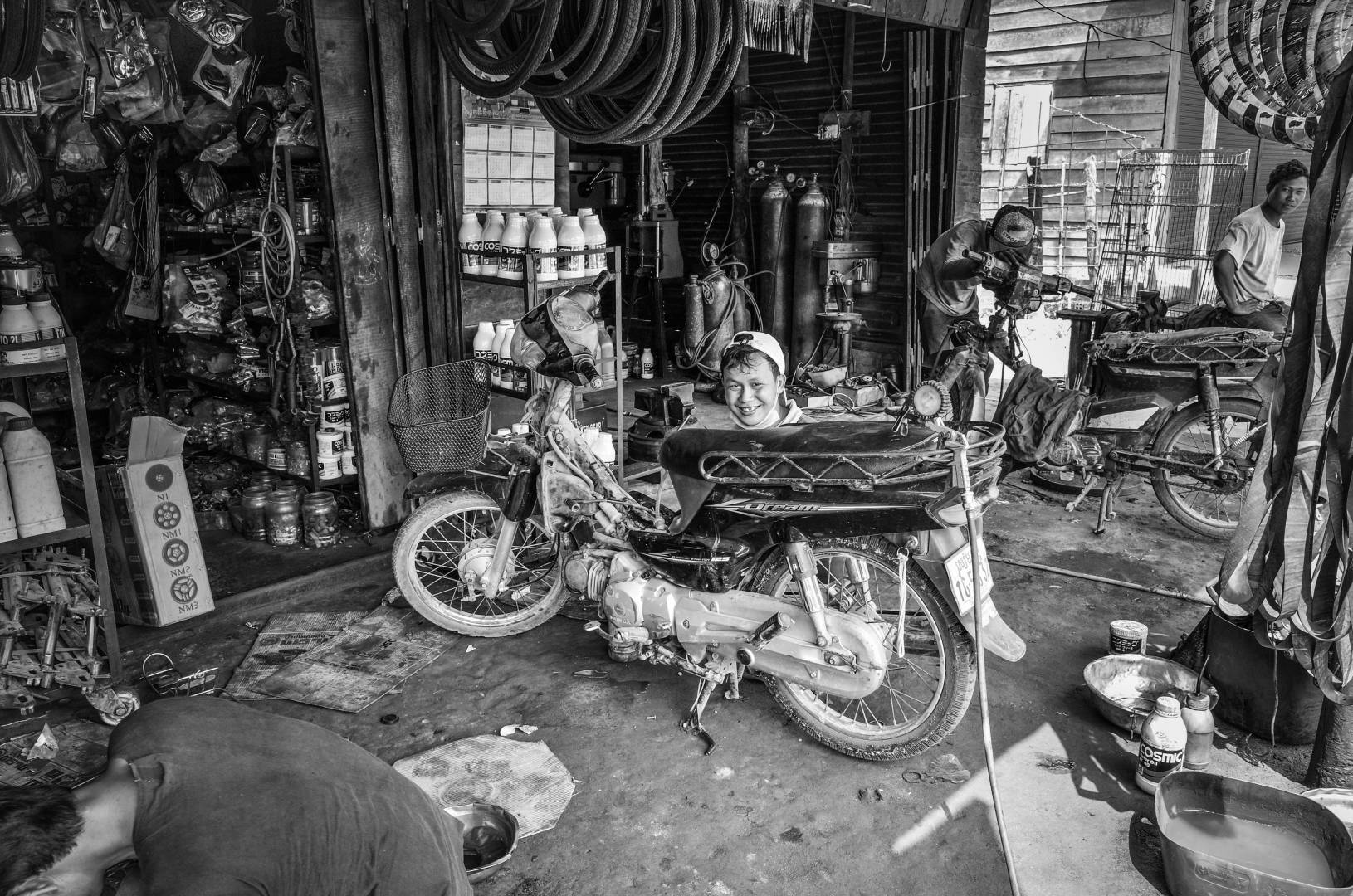
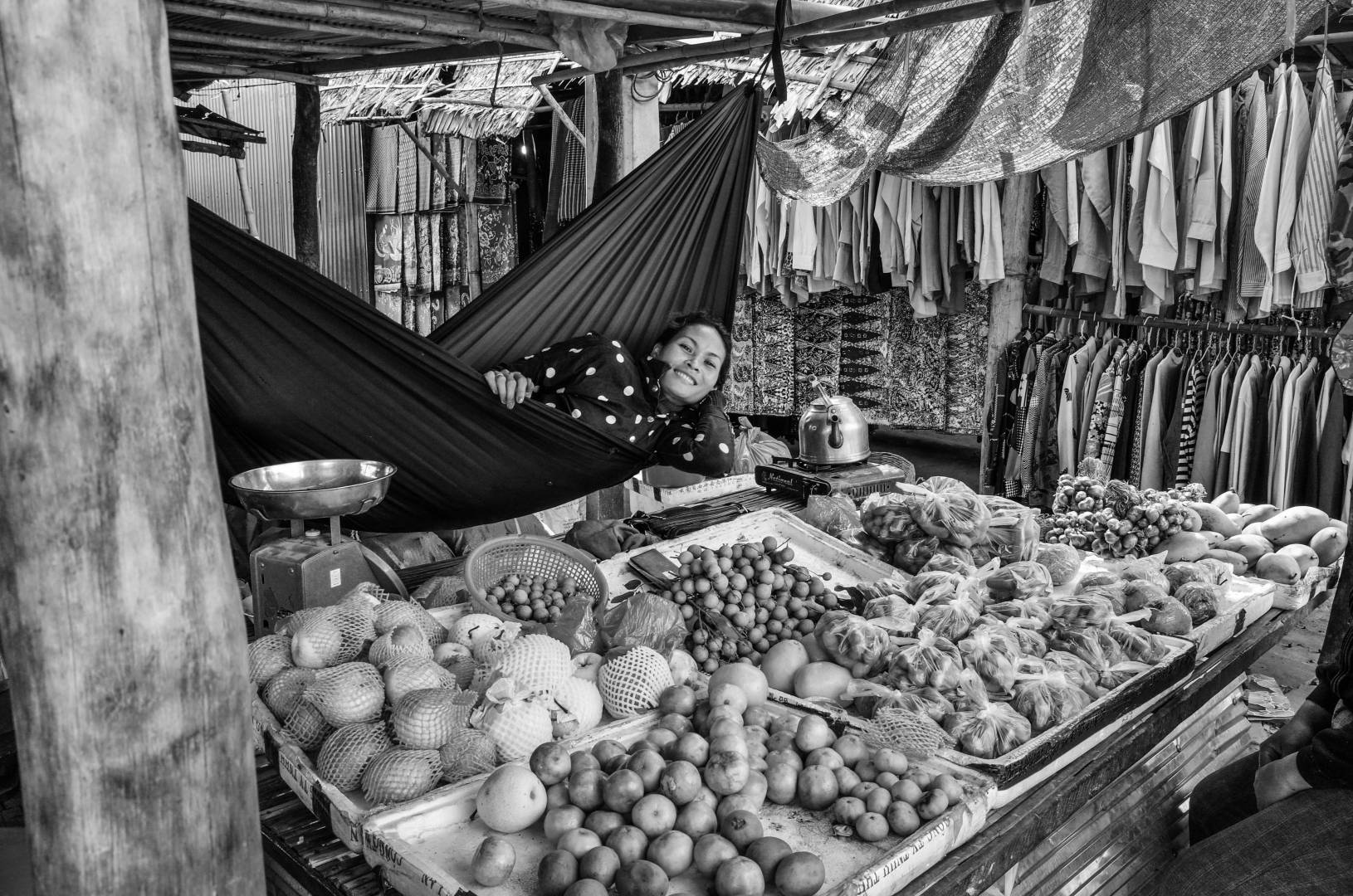
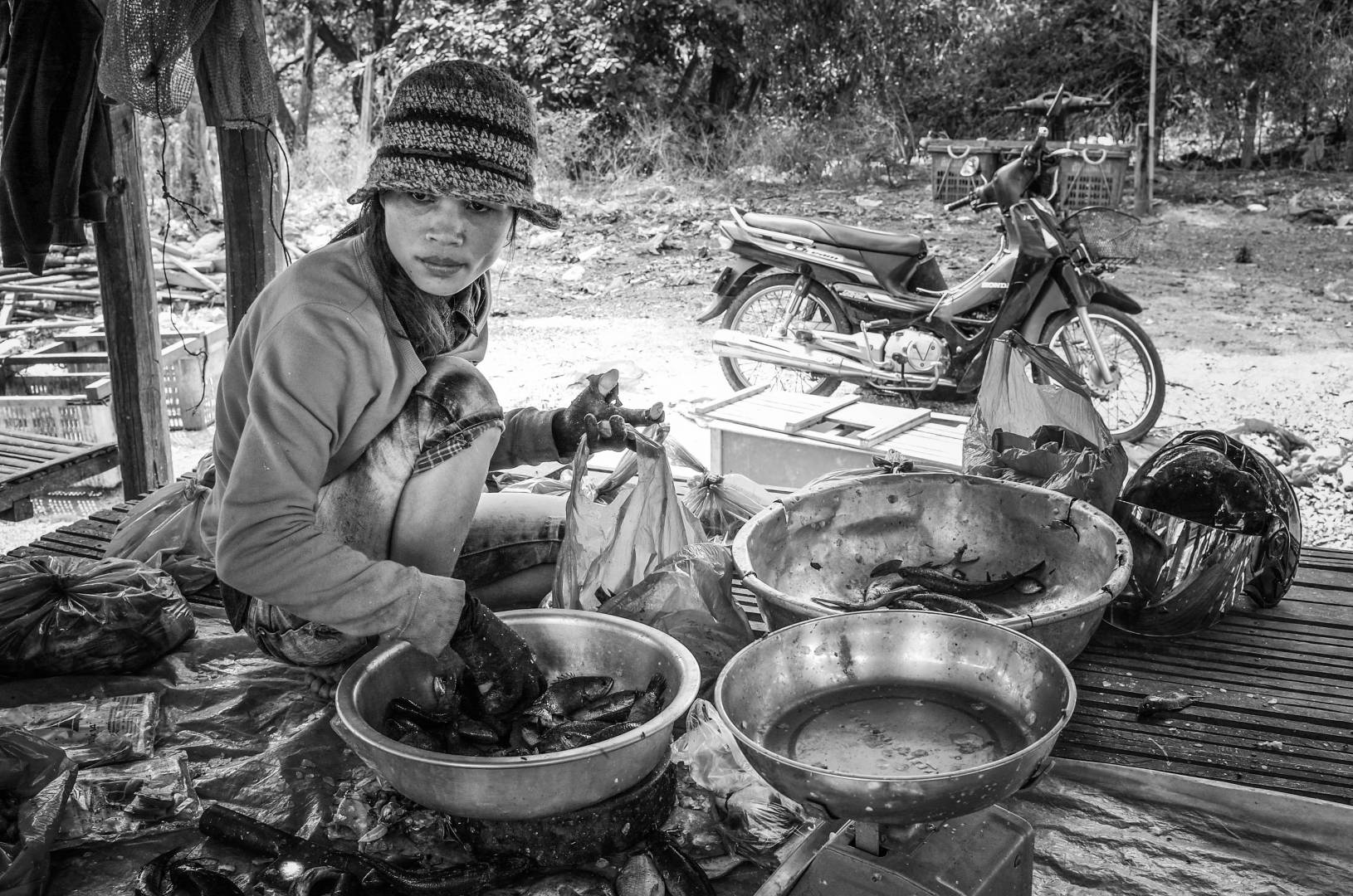
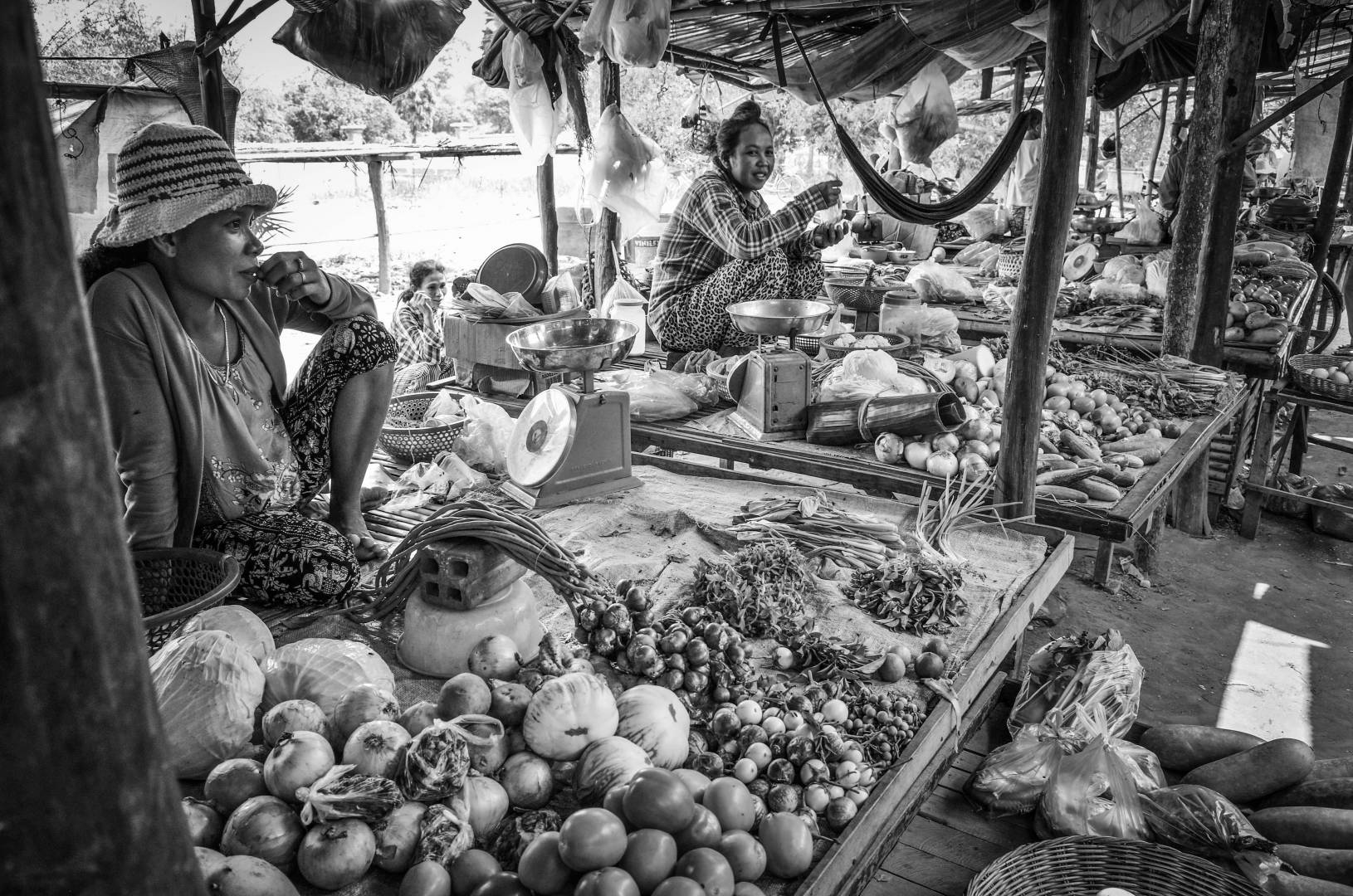
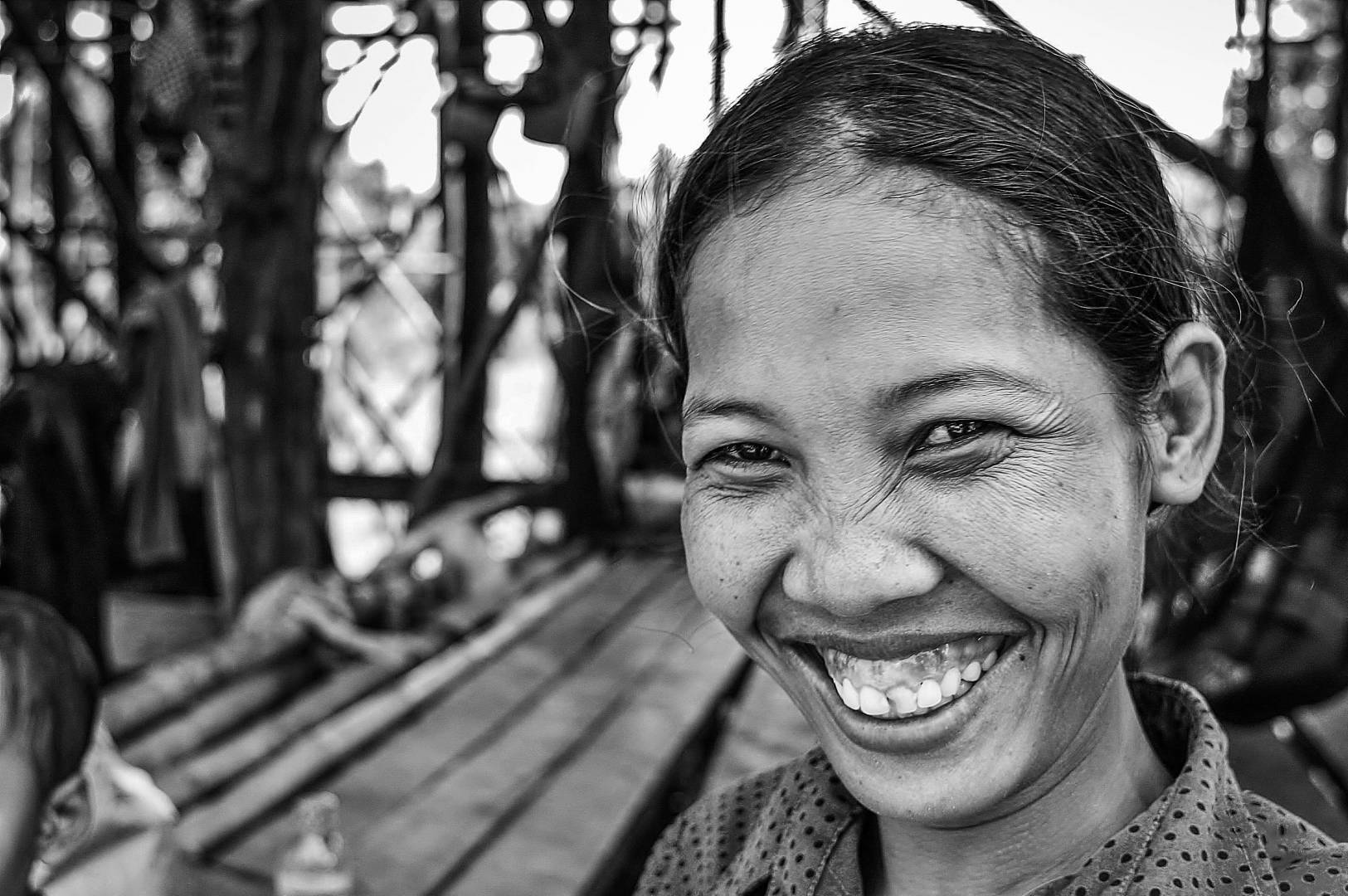

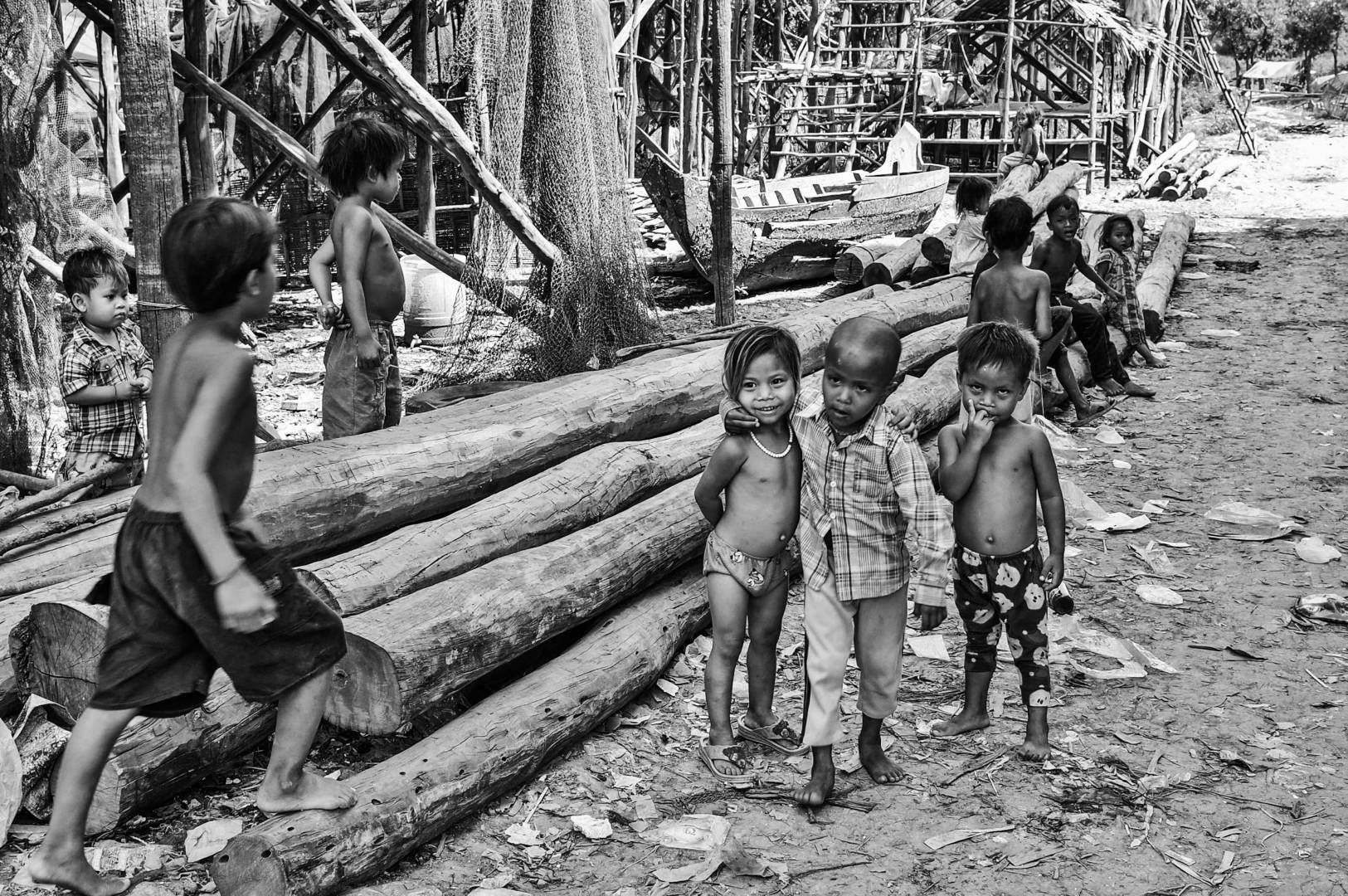
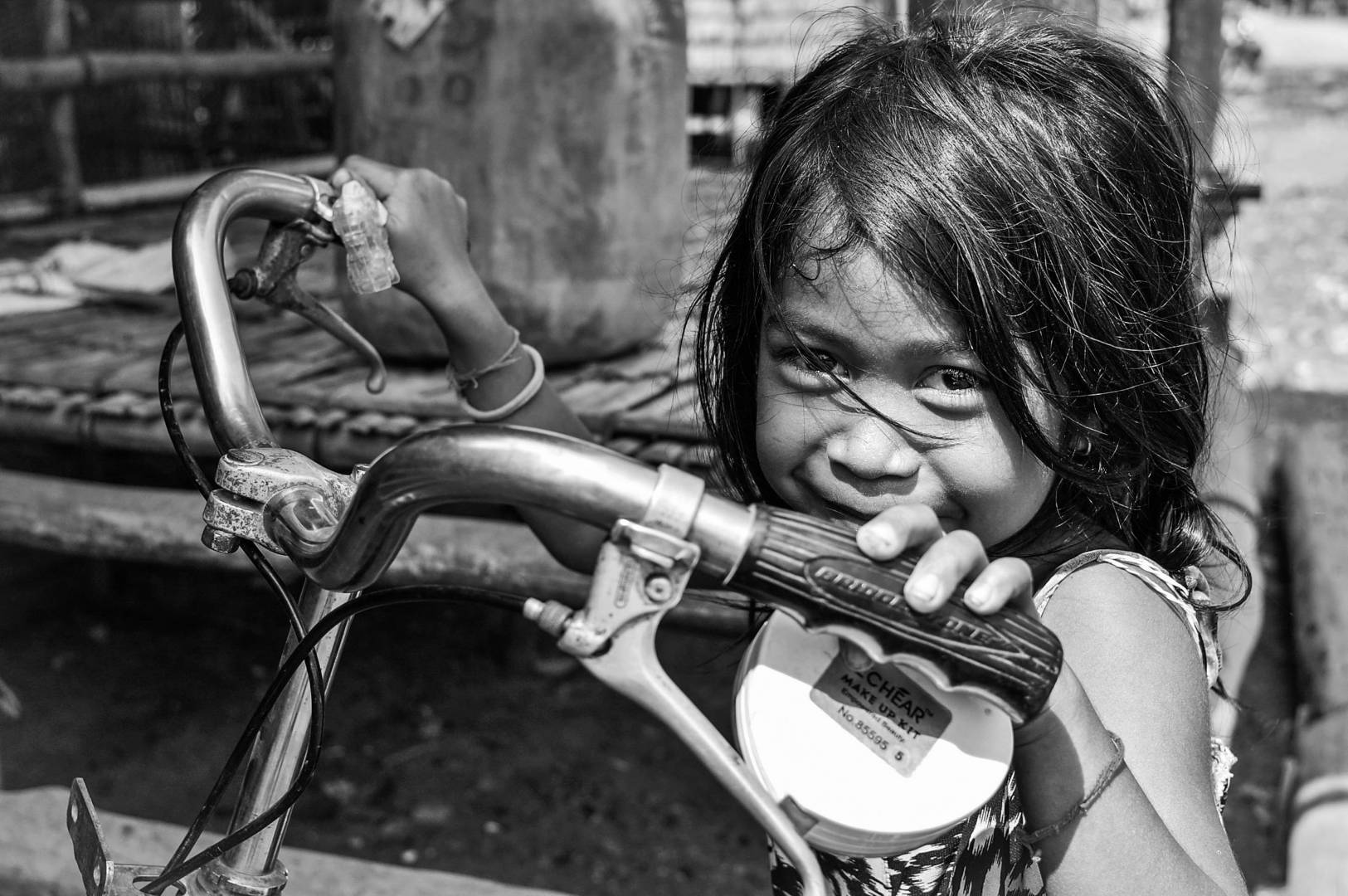
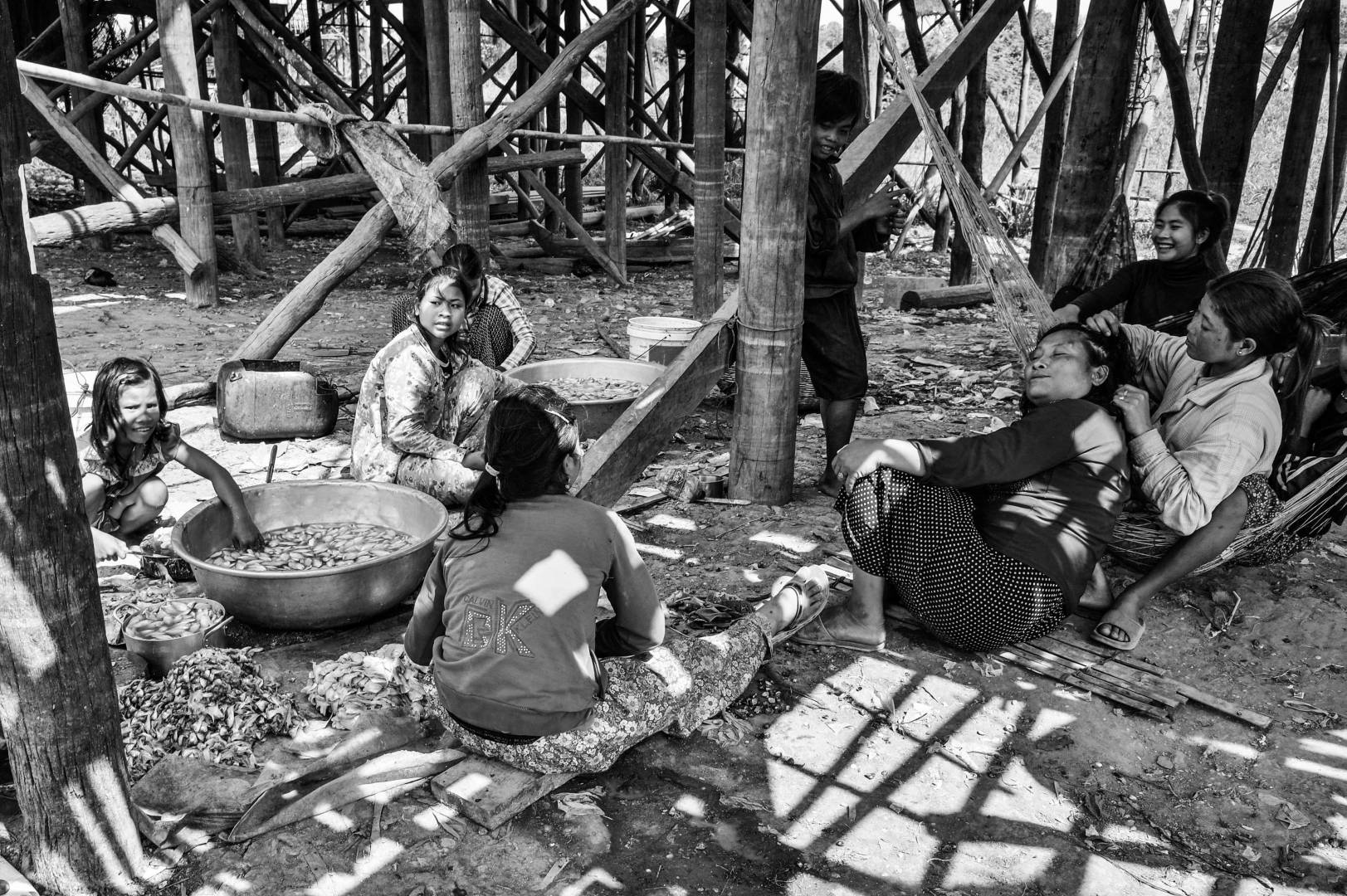
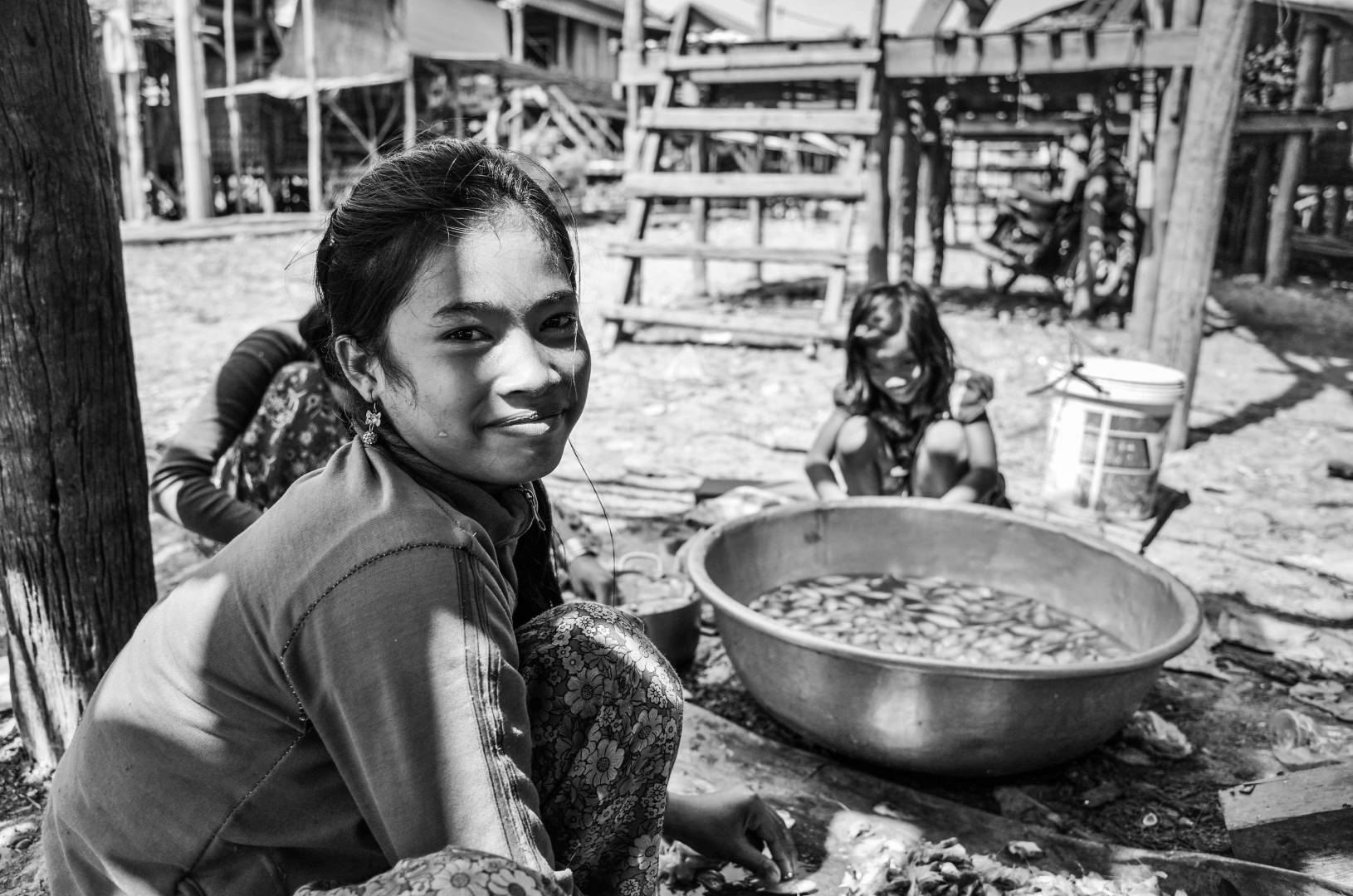
Jean……Just wanting to say that I love your Ricoh pictures and it inspires me to travel more with mine! Love that camera.
My fav pic from this post is #36 the girl with the bike.
Question: I struggle with taking pictures of people with my GR II, with focus. This picture of the girl is what I aim for but I often get some blurry pics. When it all fires right, they are super sharp. But for example, when I’m taking pics of my son, they are often blurry. I’m often at 2.8, so maybe increase the aperture? I shoot in P mode, spot focus.
if you have any suggestions I’d appreciate it!
Dave
Sorry for answering late (just a few months) but saw your comment late. I never use the snap mode on the Ricoh but the pinpoint AF, focus in the middle and then reframe and it’s done. The Ricoh is so light that maybe you move slightly and get blurry images; It has happened to me many times in the past. The best way is to go to 400 iso or even 800 but it’s the upward limit for me. If you press the AF AE lock button to focus you have the DOF which appears on the left of the screen so it gives you a pretty good idea of what will be in focus. The girl with the bike was shot at f2.8. I often use it for portraits. hope that helps
Jean
Just want to say something more general, Jean: I really appreciate how much time and trouble you put into creating a dialogue with those who comment on your articles – not just this time, but whenever you offer a contribution. Thank you.
I will second that. It’s important, I think, to interact with readers and Jean does an excellent job of monitoring and commenting.
John and Mike
I’ve just discovered your comment lately and to add some salt to the nifty fifty discussion, all the ilmage were shot either with the 28mm or the 47mm (close to 50mm) crop mode on the ricoh. Thanks for the kind comment.
Great images of a wonderful area. I last visited about 12 years ago with a Canon DSLR (can’t recall the model number now). I must look through those photos again. Lovely to read about your educational work in the country too.
Thanks Steve. Finding your images will certainly provide an excellent article
Nice story and photos, Jean. B+W or Colour does not matter as these are all very good. I nearly went to Angkor and Tonle Sap in 2008 while I was working in Qatar. I had been invited to an ITU Telecoms conference in Thailand and my wife and I had planned to go on a short trip to Cambodia afterwards, but my wife got ill and so we cancelled the Cambodia trip. She had pretty well recovered by the time of the conference and I just went to Thailand on my own. Your photos convey exactly what I expected to find, ancient ruins overgrown with the jungle plantation in places and friendly smiling people everywhere. I might never make the trip now, unless I find a good enough set of reasons to make the long trip from Ireland to the region. Congrats on your NGO work.
William
Thanks William for your kind comment. Pity you could not make it. Unfortunately the NGO partnership is at a standstill at the moment as I’ve found no willing teacher to take over so far.
All the best for 2020
Thanks for a terrific article with wonderful black and white images. I particularly enjoyed your narritive content which I am not so good at. I enjoy taking the photographs but never bother to take enough notes as to where they were taken and research some of the history about the place. Like you, I favour B&W images, taken with the Leica Monochrom or converted from RAW files. I lived in Singapore for 7 years and managed to visit most of the surrounding area, but never got to Camblodia, something your article makes me regret.
You should no doubt enjoy Nepal, we went in 1989 when we were living in Dubai and thought it was a great place. Hope you enjoy it and look forward to seeing the images and reading about your trip.
Tom, have you pre-ordered the new 41MP Monochrom yet? Grist for your B&W mill?
Thanks Tom for your kind comment. I never take notes when I take photos but I always remember the place or occasion. I guess it comes from teaching and having to memorize about 150 pupils’ names every year. I’m looking forward to Nepal though I’ve been told by fellow travellers that it is quite busy now. If you have the opportunity to go to Cambodia now the Khmer temples are the most impressive buildings I’ve seen in this part of the world.
Jean , thanks for your thoughts on the bushfire situation. It is catastrophic but as Wayne says it is not impacting us personally apart from the toxic smoke haze. Sadly many people and so much wildlife have been seriously impacted.
I have to say that I am with David B and the others above-these monochrome photos do absolutely nothing for me at all. The colour “originals” are so much more appealling. For me East Asia is all about the people and, above all else, the vibrant colours.
Glad you and Wayne are safe. The next article I plan to prepare will be both colours and black and white
Jean , that’s even worse. Never mix colour and black and white .Choose one or the other and make sure you choose colour..
I presume both of us are strong headed. LOL 🙂
Thanks Kevin for your kind comment. The Siem Reap area (Angkor temples, Tonle Sap and the city of Battambang) is really amazing, just like the kindness and smiles of people.
Thanks Jean for this very interesting article and informative pictures. Perhaps one day I’ll get there. The two children facing in opposite directions is a favourite. The quality of the carving is amazing and something that is new to me regarding those temples. Thanks for focussing (in both senses) on those for this article.
Hello Jean. My better half always tells me that good art often ignites debate.
On that basis your article qualifies for sure. B&W or Colour? Which one and why? “And the beat goes on” (Sonny and Cher, a long time ago).
I must admit that I’m in the colour camp. The B&W images are good, however they require considered study – maybe that’s actually a positive? But the colour image counterparts in your LFI gallery were immediately enjoyable, and strongly convey the richness of the Cambodian culture.
Hi Wayne,
I was going to email yourself, and Mr X1, just to check you are both okay with our news being full of the Oz fires in NSW. So I hope you are both okay, as it doesn’t look good from the Northern hemisphere.
Dave
Thanks Wayne. I regularly check the the NSW rural fire service and hope you and John S are not affected by the bushfires. The images we have on TV are pretty awful
Thank you for thinking of us Jean. We have had bad wildfires in Australia in the past, but never so many and as widespread as at present. The irony is that just five weeks ago we and three other sets of friends spent a wonderful two weeks at isolated campsites in the Victorian Gippsland regions. Two of the three campsites (and maybe the third) now gone. Special old growth forests which will need a decade or more to recover.
I did get some good photos during our camping trip, but sadly now isn’t the time to write up and show what is no longer there.
Fires not presently impacting our home areas for us or John S., except for lots of smoke in the air. Cheers, Wayne.
Hi Jean,
What a wonderful romp through some of my favourite temples – and seeing them in mono is really nice. I also crossed over to the LFI and looked through the colour images too.
It looks like a really interesting place, and that little Ricoh has done you proud.
I must confess that I love the mono images for the temples, but prefer the colour images for the people and street scenes.
Dave
Thanks Dave. Black and white often enhance the structures of monuments and the GR B&W high contrast option is a real plus but it doesn’t work for portraits or people as the in body imaging is too contrasty in that case.
Another cracking article with super mono images. I have viewed some of your colour images via the above link (and in other articles of yours) and you are as accomplished with colour as mono. However, I can’t resist putting in my two penny worth on the merits of mono images. As you say, mono is a great aid to composition but it is also a way of allowing the subject to stand out more without the sometimes distraction of colour in the background or subsidiary parts of the image. The faces in your images are utterly compelling and draw the eye strongly, possibly in some cases more strongly than in a colour image. I am not arguing mono is always better but only that there is a compelling case for using mono more than many of us including me generally do. Well done, Jean and thank you for your excellent article.
Thanks David for your kind comment. I’d love to see some of your fuji images in black and white.
Thanks John. The GR provides beautiful black and white conversion.
Thanks John. If you fancy the colour version of some images just click on the link below.
https://lfi-online.de/ceemes/en/gallery/jean-perenet-459272.html
Well, I really did – do – admire the B&W, but I have to say I found the colour images much more engrossing emotionally f o r t h e s e s u b j e c t s. (Italics!)
What remarkably colourful B&W !
“..nothing beats my Leica X2 for colours..”
That’s what I can’t understand, Jean: why not create these photos in colour instead of black and white? ..The colours of the stone, of the children’s clothes, of the monks’ robes, of the food, of the motorbikes, of the trees.. why would you choose to forgo all those colours?
My travel camera is my ricoh GR, not my X2. I’ve been a black and white shooter for years in analog times, had my dark room and has always loved the way black and white make you focus on composition however faulty mine can be. Colours can be distracting at time. You can see some of the images in colours in the lfi gallery (link below).
https://lfi-online.de/ceemes/en/gallery/jean-perenet-459272.html
Ah, thank you, Jean! ..Now I can breathe again! ..To me, they’re so much more ‘expansive’ in colour, upbeat and optimistic! The ‘composition’ is secondary – to me – to the ‘content’!
But many (all?) of those pictures in colour are identical to the black-&-white ones above ..and so they must have started out – been shot – in colour, and then been desaturated, or converted, to b&w, no?
But I can’t understand why one would do that. To me (..and I’m speaking only for me, of course!..) that’s like, say, blurring out all the faces in the photos, or blurring out all the wood, or all the stone, or some random feature in the photos. I can’t understand why one would want to lose all that essential colour! I can understand “..focus on composition..” if the pictures were being shot in black & white, but I can’t understand removing part of the essence of the photos to make them look as if they had been shot in black and white.
To me – and just to me; I can’t speak for anyone else, of course! – looking at these pictures in black and white is like watching a film with the sound switched off ..I’m missing a good half of the content. But each to their own.
Many thanks, Jean, for the glorious versions in colour on the LFI site!
Thanks David. It must be a habit of mine converting colours to B&W. You’ve given me an idea for another article with side by side colour and B&W images.
I agree. Much as I appreciate monochrome, though perhaps not so darkly presented as the early ones illustrating this essay, markets and people deserve to be shown in full colour. I would certainly carry the Leica X2, at least as a reserve in case of theft or failure.
The images of temples and sculptures were taken in black and white high contrast (my favourite setting even if one loses all the grey transitions). I won’t take the X2 to Nepal next month as I’d miss the 28mm FOV. The GR is just my favourite when travelling despite some limitations.
Beautiful. I can smell the fruity merging smell in the market beyond the cooking of what they are selling. You really know how to get and hold your audience attention, and we appreciate that fact. Can’t wait for your next travel tour, where you headed? Can you give us a hint? I know it will feel like an eternity waiting for your work, thank you!
Thanks for your kind comment John. Unfortunately the smell and taste of dried fish don’t agree either with my nostrils or my intestine. Off to Khatmandu in six weeks’time. Waiting for our visas at present. they should be in the mail box with our passports in a couple of weeks.
Thanks Brian for your kind comment. The Ricoh cameras excel when it comes to black and white. I bought a grii a few months ago to replace my old gr that I now keep as a backup. The B&W high contrasts are even better than the first iteration but nothing beats my Leica X2 for colours.
I love the breadth and depth of your article. You certainly are knowledgeable and your passion for the people is very evident. The black and white images are well suited to the subject. The GR is a very capable tool and you have skillfully used it. Thanks for your effort put into this fine article and I hope someone takes over from you but they certainly have big shoes to fill.